August 13 2023
Martha O'Kennon
Summer is racing along. The temperature here has been relatively comfortable, unlike many places in the Country. Here is the state of the Pond when we left last week.
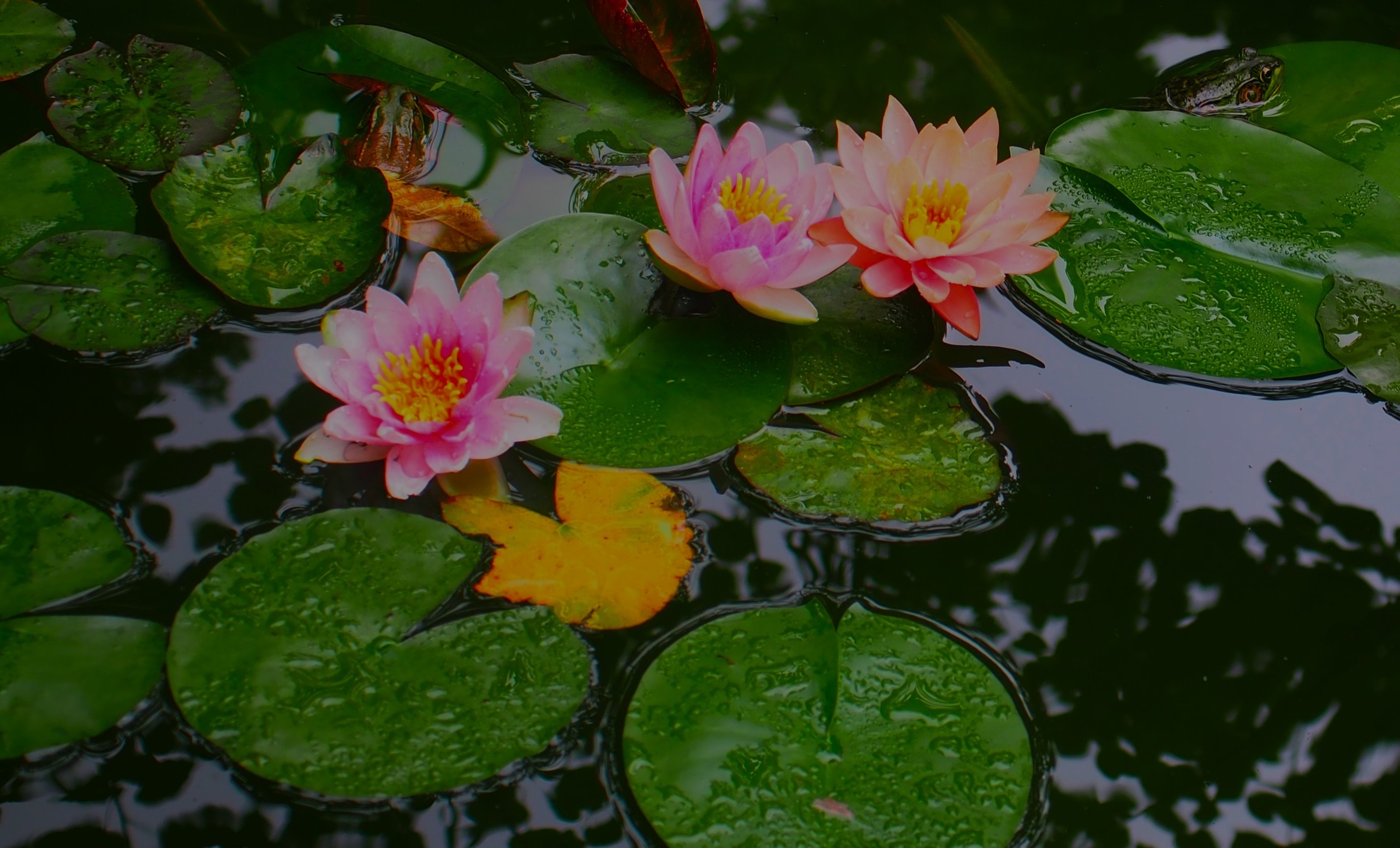
Remember that there is information in the name of the file for each image. You can see it by mousing over the image - look at the lower left of the screen. Or you can
click on the image to get to the (usually) larger image. Then the info is displayed in the address line above. Sometimes the second click will actually display a different view of the
original image.
The Ants seem to scurry past so fast that I haven't gotten many decent pictures of them. This one picture shows one running past the Pond which seems to be carrying a pupa. I'm sorry to say it was so small and so fast I don't know what it is. Sorry again to say, since I couldn't find any Beetles, we might also just as well skip to the Bugs. If you tell me there are no Bugs, I think we could just as well skip to the end! Oh hooray! There actually are quite a few Bugs this week. Since we like to start with the assassin type Bugs, here is our old friend Empicoris errabundus. It is only about a centimeter long but it packs a lot of damage into that length. I think I've seen one just about every time I go out to shoot the North Wall. On August 5, though, I saw a strange thing. After a long conversation with @kbrebennikov of iNat, we decided that this was probably Empicoris errabundus but an albino-esque version. It even has red eyes. It still seems odd to me! I tell you, this stuff just keeps getting more and more interesting as time goes on.
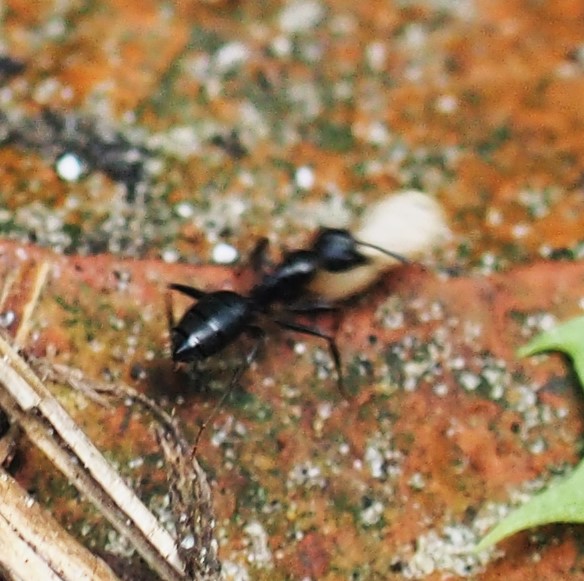
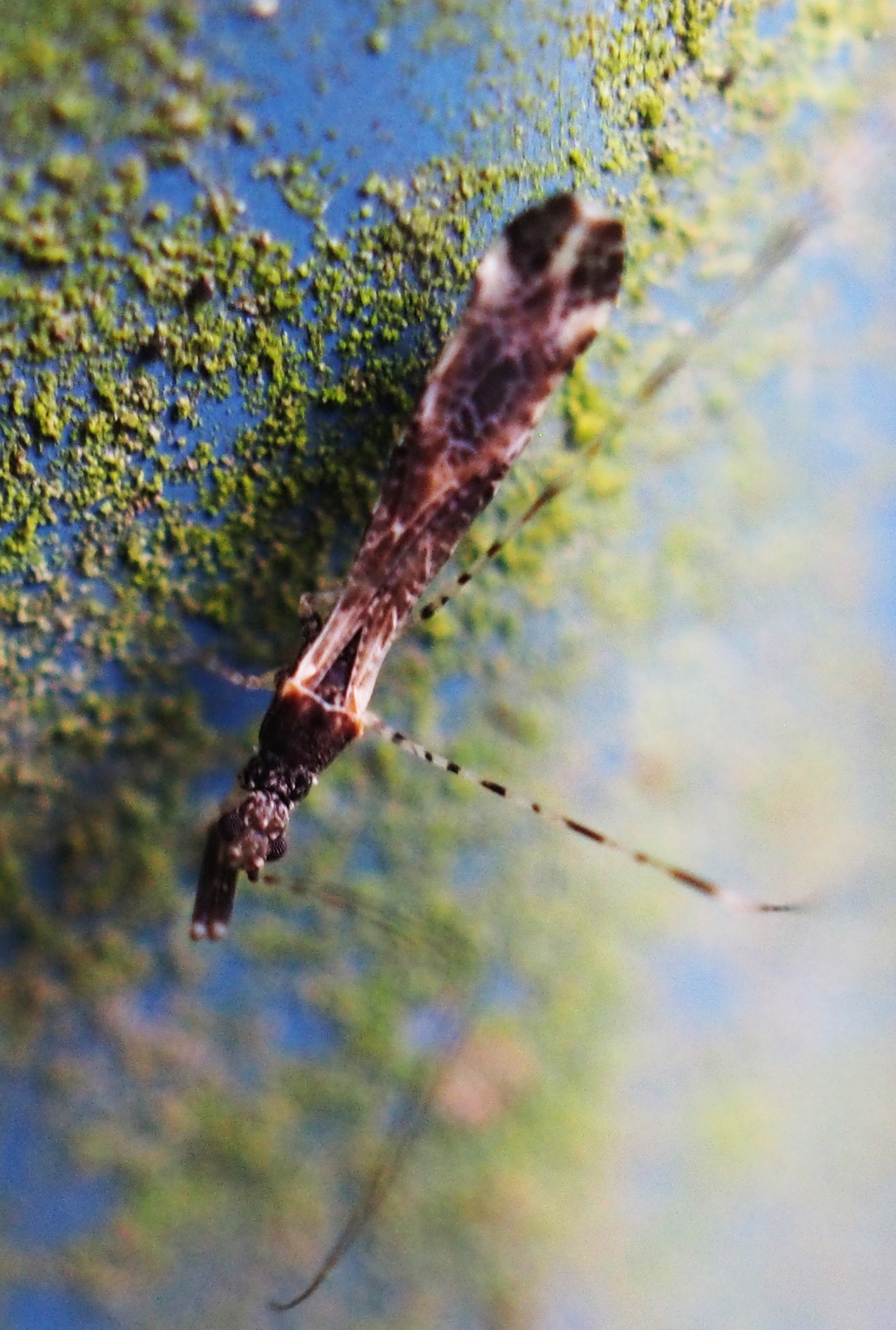

That was just our first Bug of the Week. If you haven't seen this one for a while, it really is a Bug, the nymph of the leafhopper Jikradia olitoria. It was one of the Bugs that really attracted my attention and awe at the variety of Nature. Last is yet another hard-to-identify Leafhopper, one in genus Aphrodes.
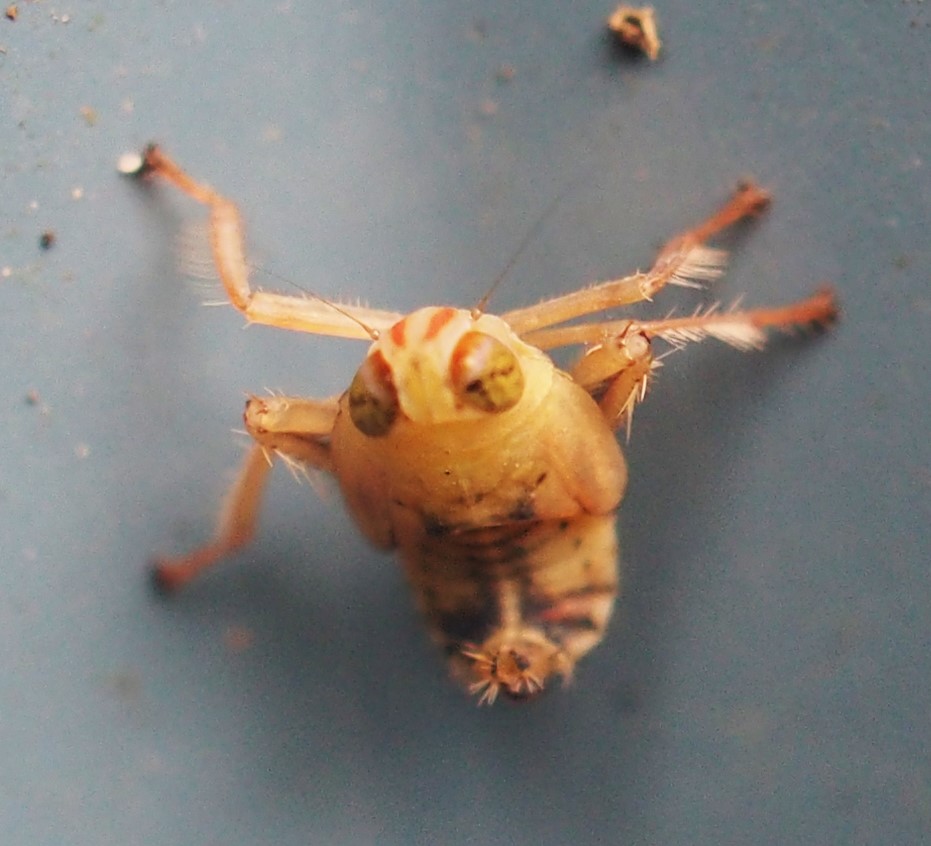
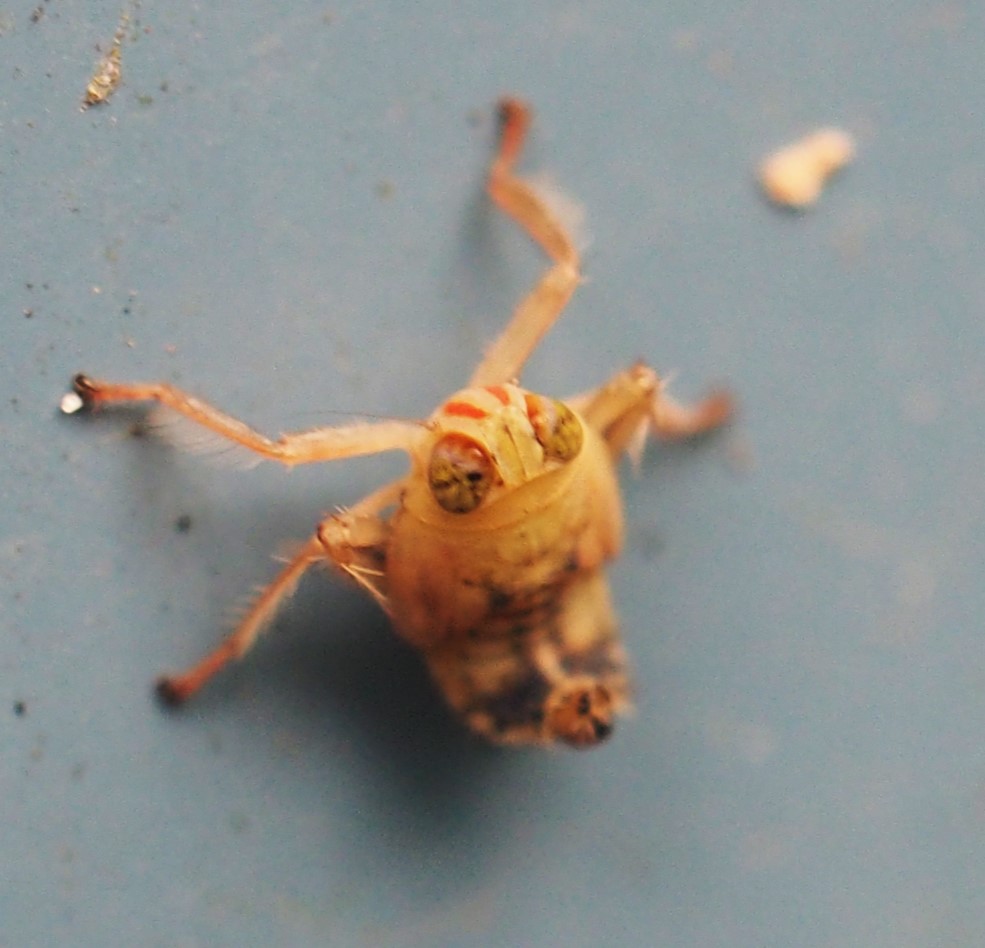
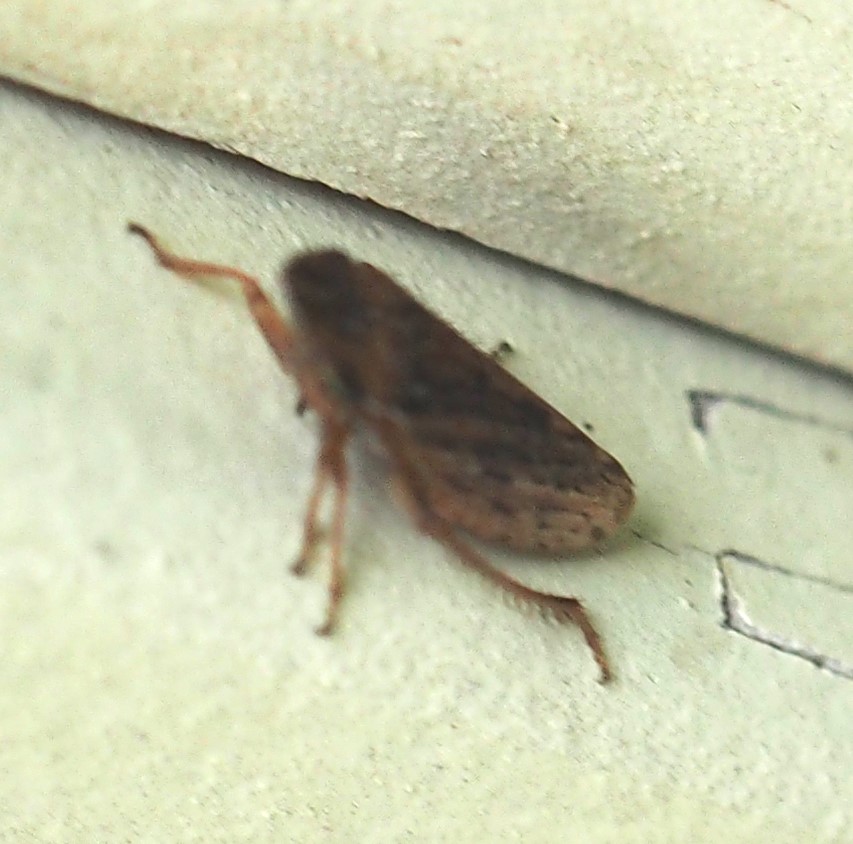
Here is another Leafhopper, but it was sneaky enough to land in a very dark patch of the South Wall. So it's a mystery for now, or until it decides to land in a light section of the
Wall. But pictures 2 and 3 make up for that first one in a couple of ways. First, the photo came out all right, and @hopperdude215 of iNat remembered what it was: it's called Erythroneura palimpsesta, and it's one of the few creatures that come to my yard every once in a while, and almost nowhere else. Two people, one in Tennessee and the other in Georgia, have submitted pictures of something that look like this one. The one in Georgia looked so much like mine that I submitted it to @hopperdude215, who said it was the same kind. So now there are TWO people who have claimed to see that Bug!!!
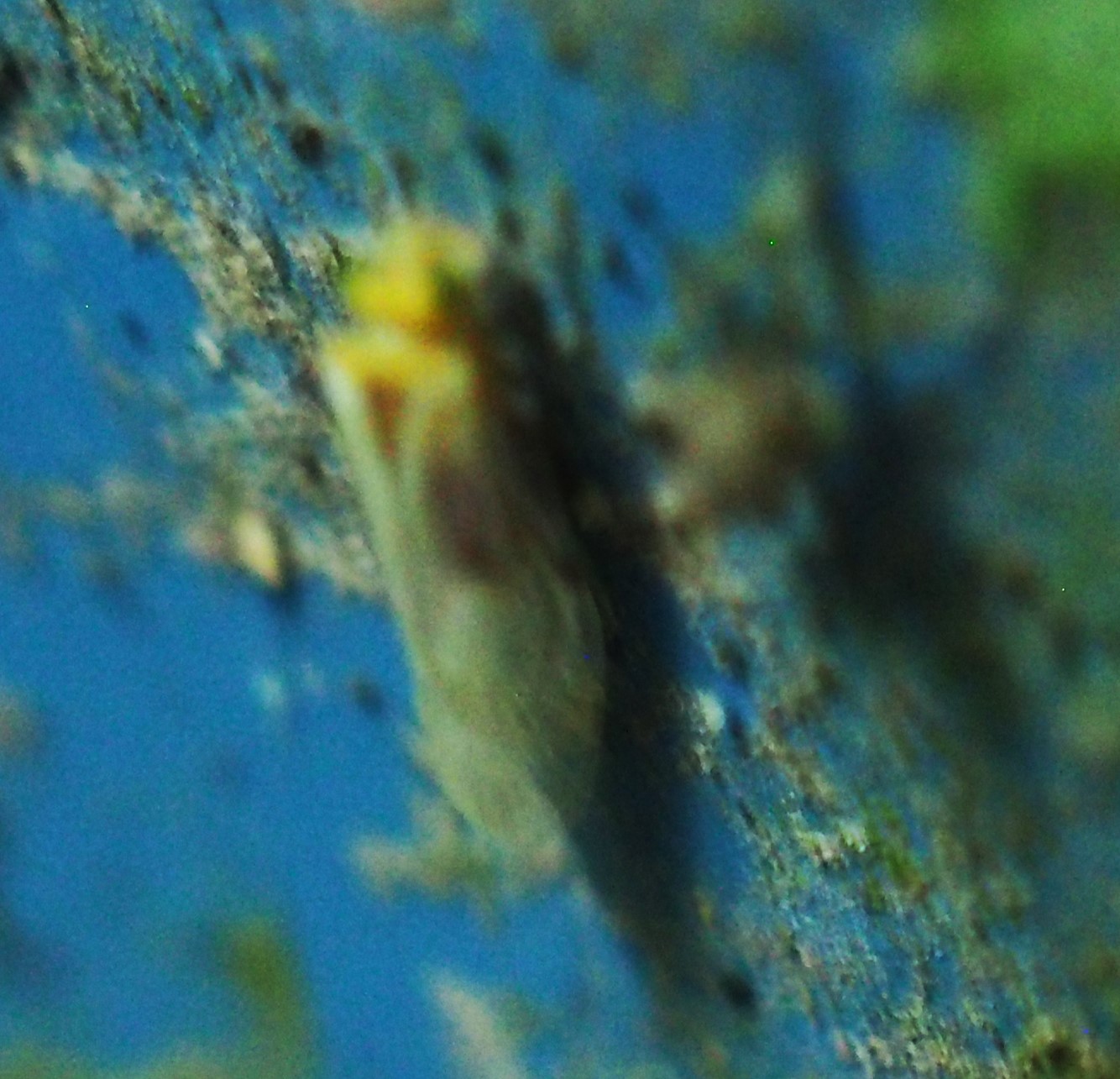
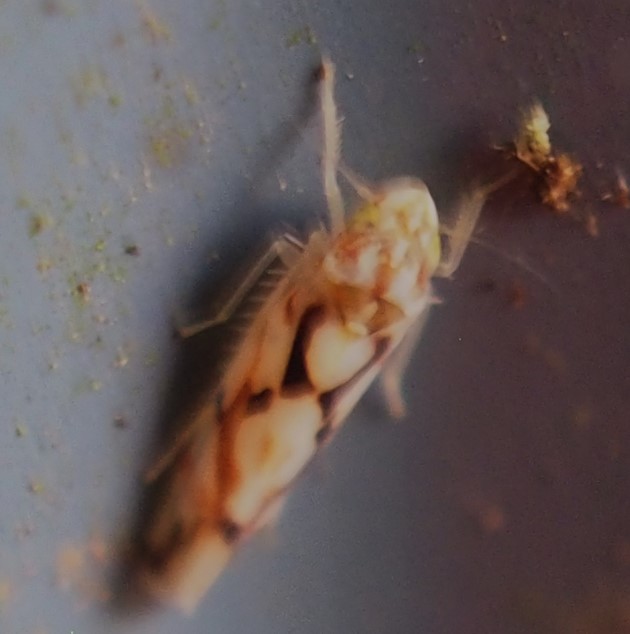
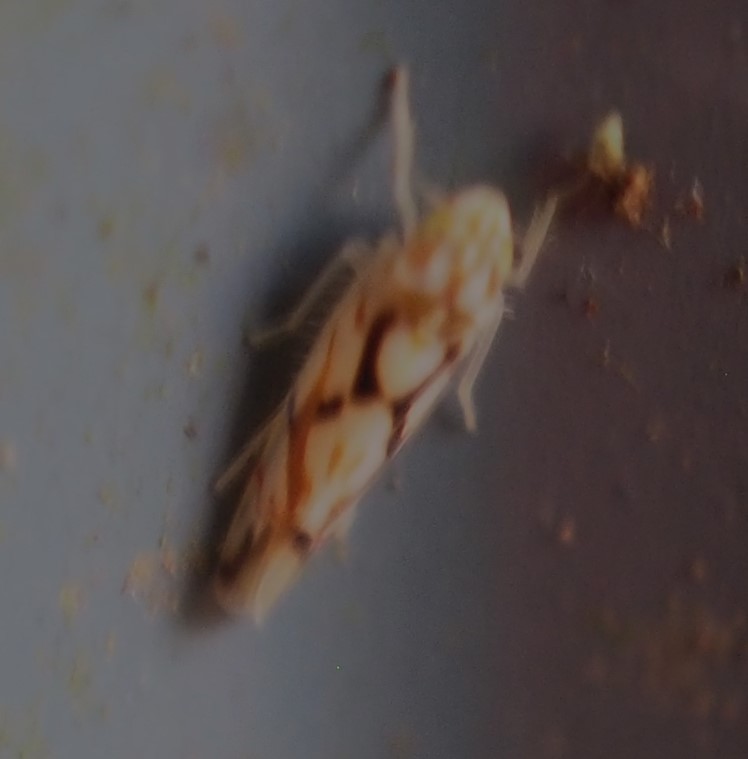
One of the creatures very close to a Leafhopper is a Spittlebug. The one Spittlebug I've seen pretty often in my yard is the Alder Spittlebug. Here are two photos of the Alder Spittlebug.
This Cicada clawed its way up out of the ground this day and very slowly moved around away from the place where it had emerged. So far it's been identified as a Dog Day Cicada. The next Bug we see is a smallish Stink Bug, probably in genus Euschistus. There have been quite a few of them this week.
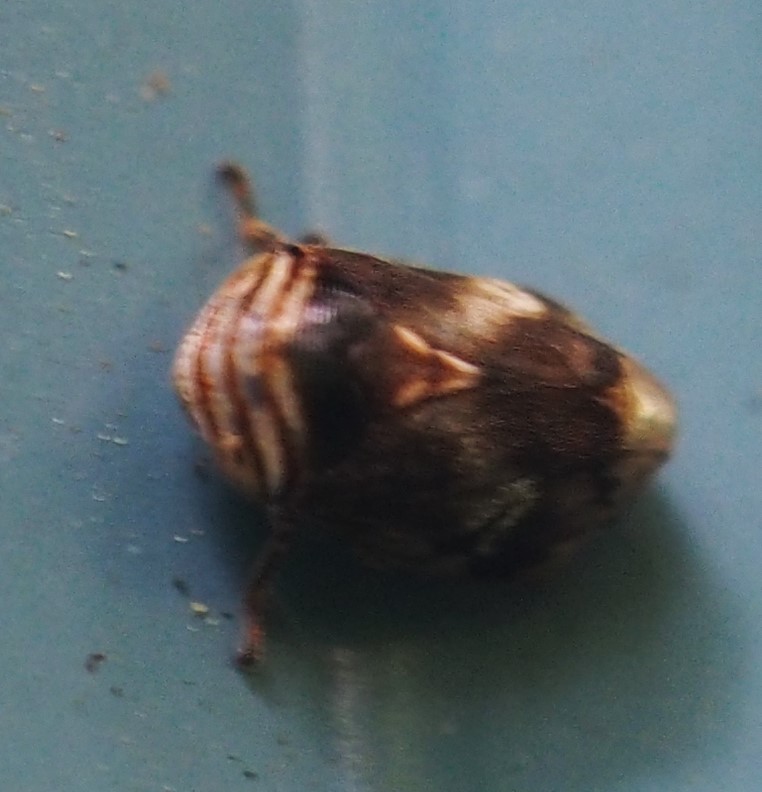

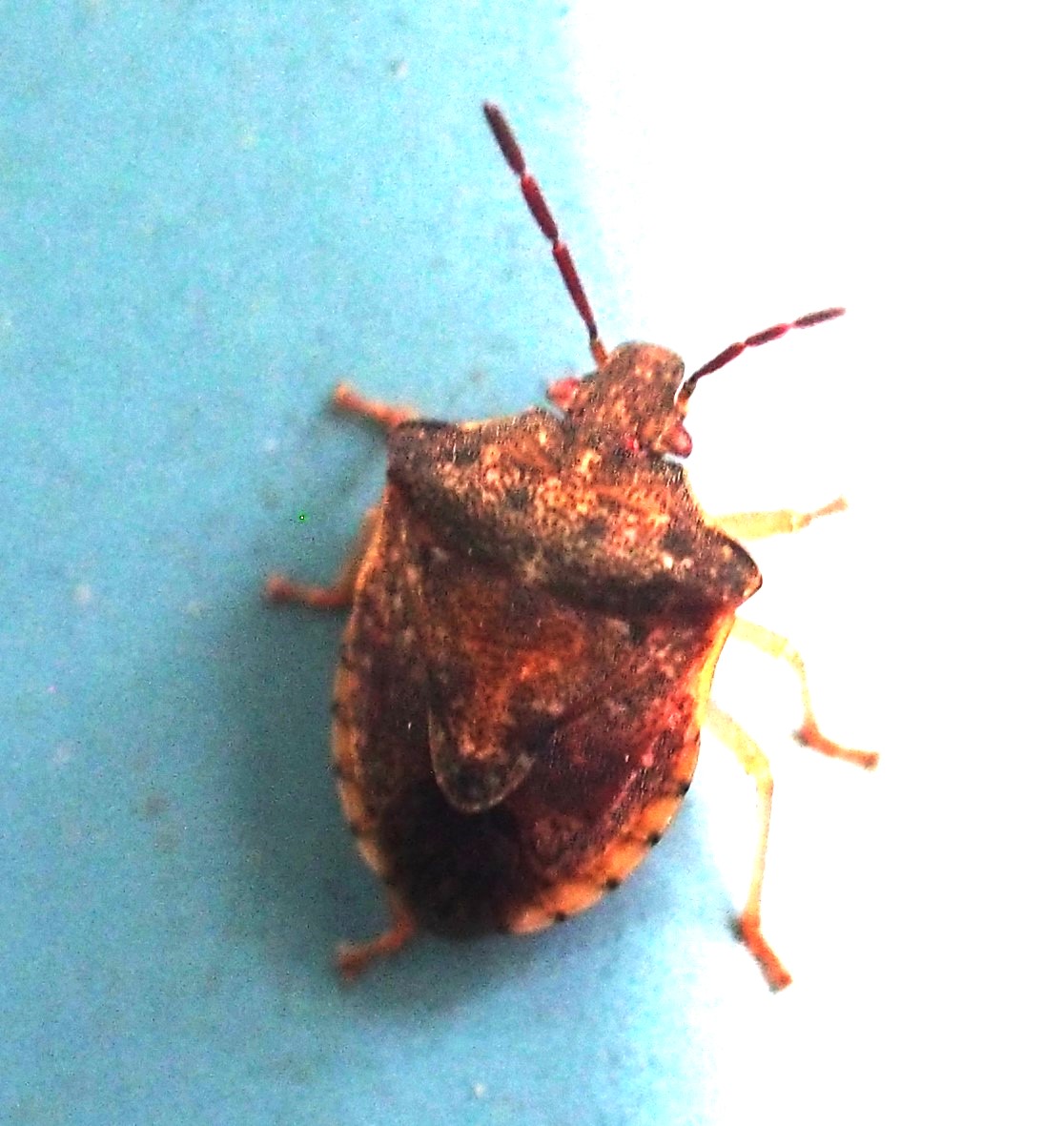
We have one more Bug to mention, and that's the very familiar Assassin Bug, Zelus luridus.
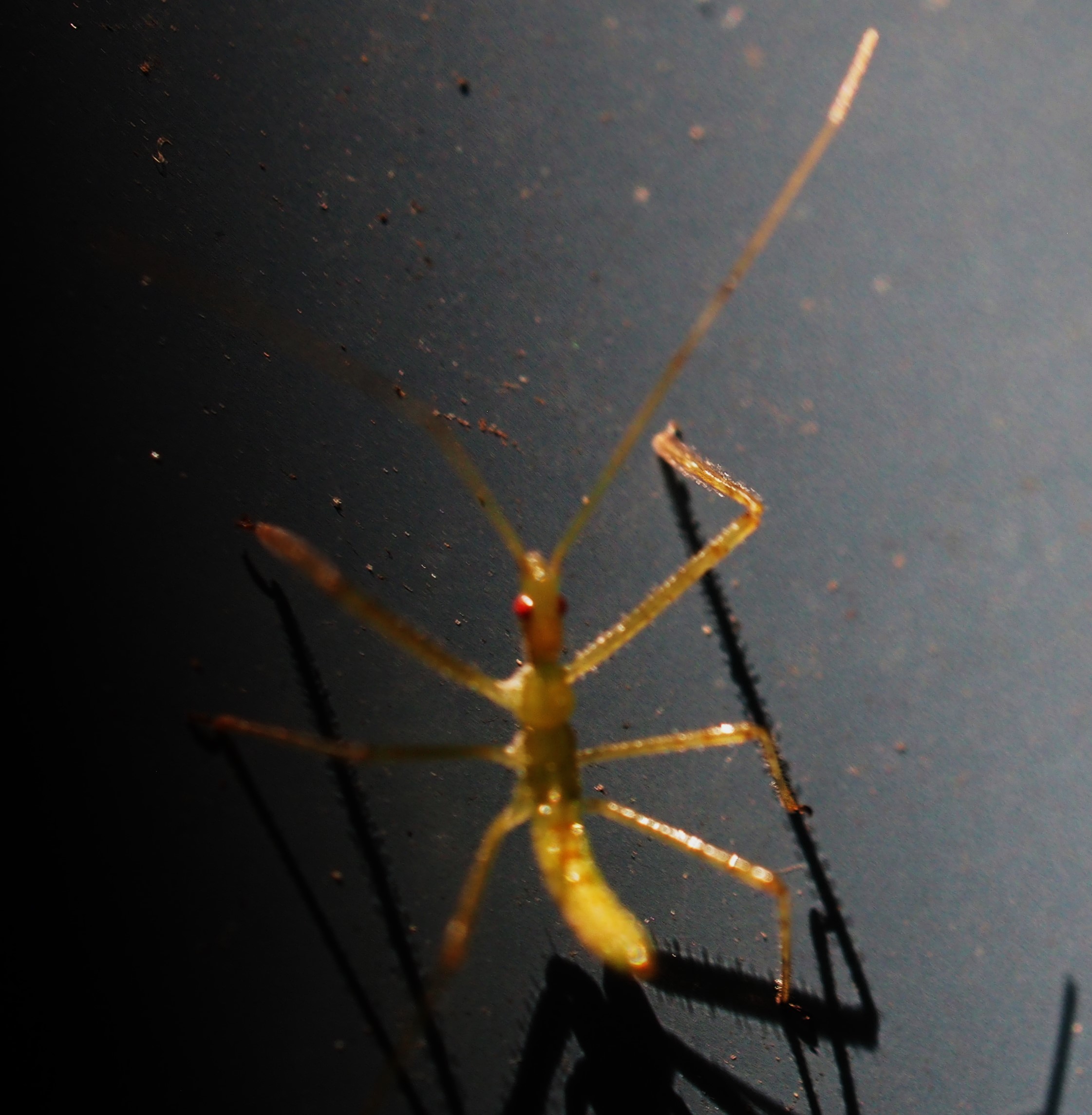
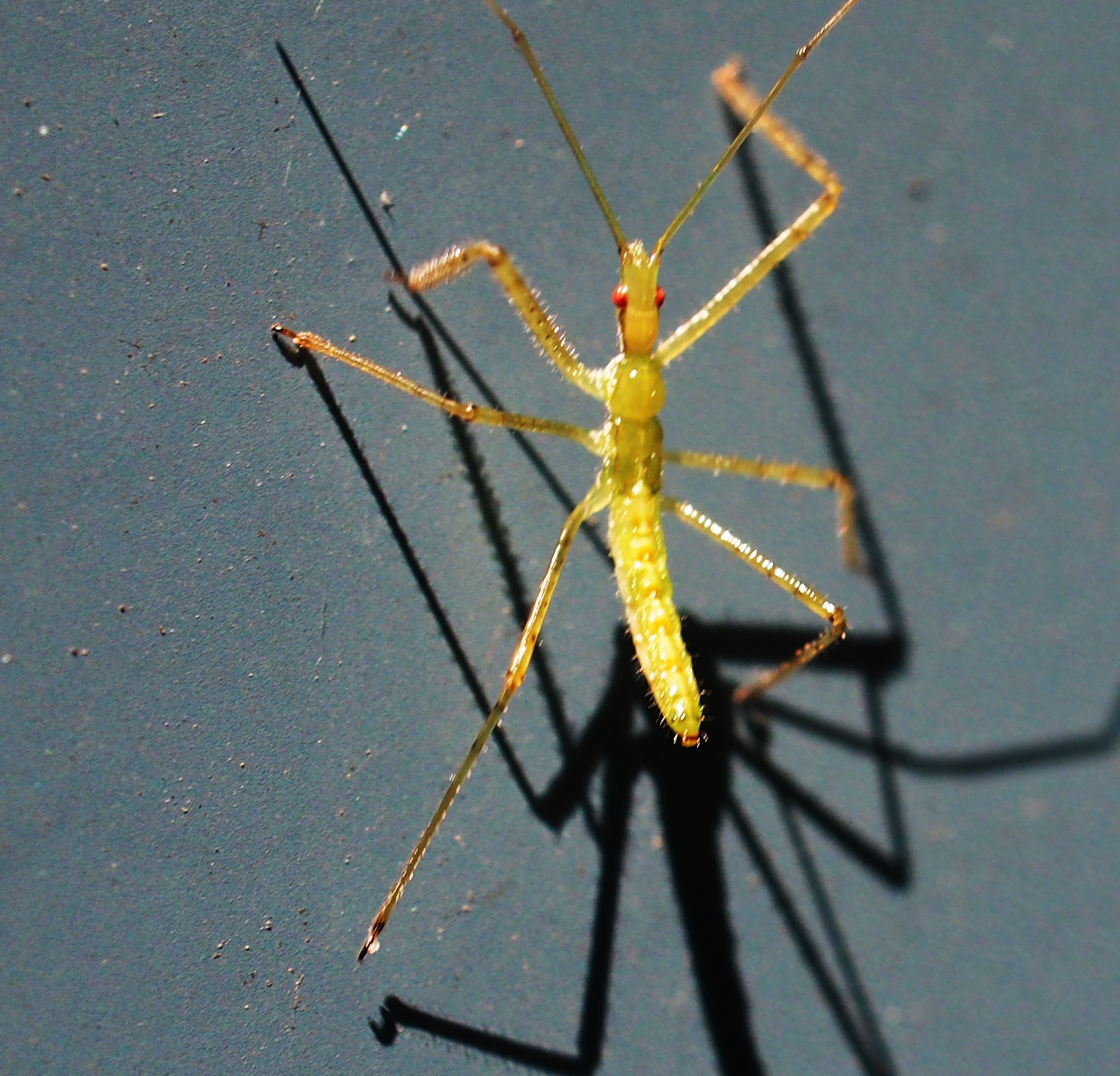
So let's see what we have in the way of Barklice. We start as usual with Graphopsocus cruciatus, our most faithful friend among Barklice. Pictures 2 and 3 show groups of nymphs.
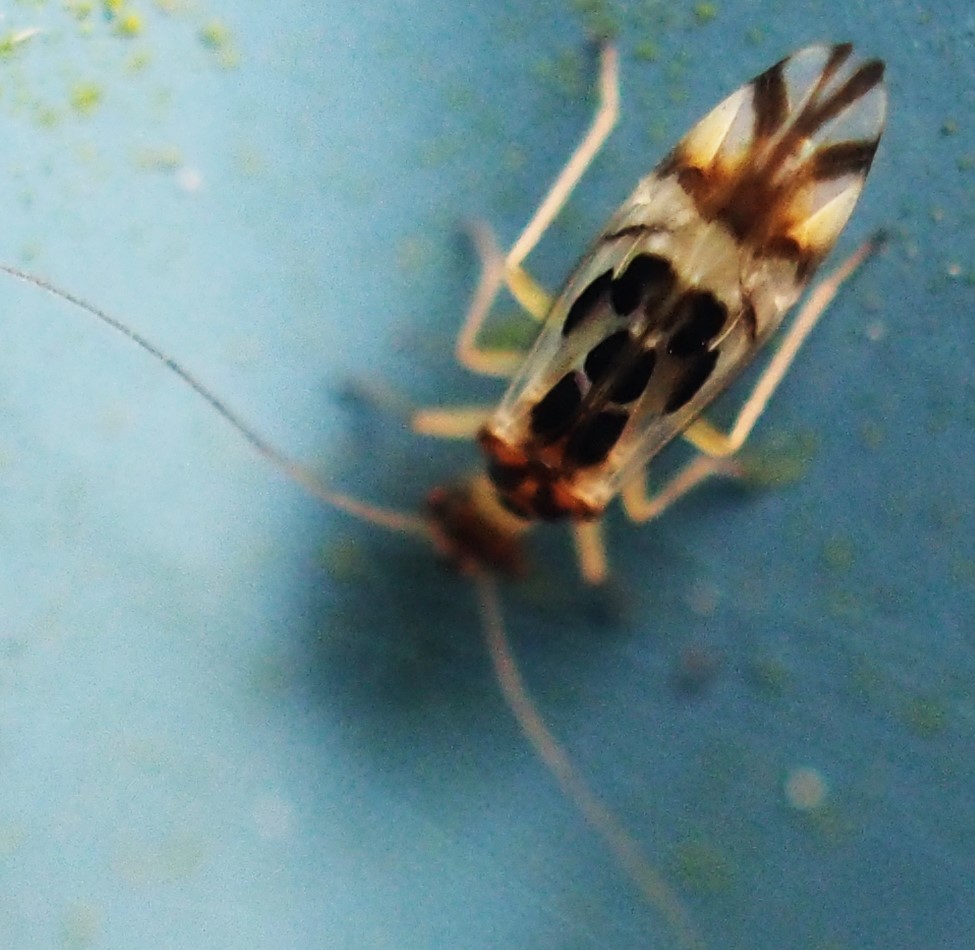
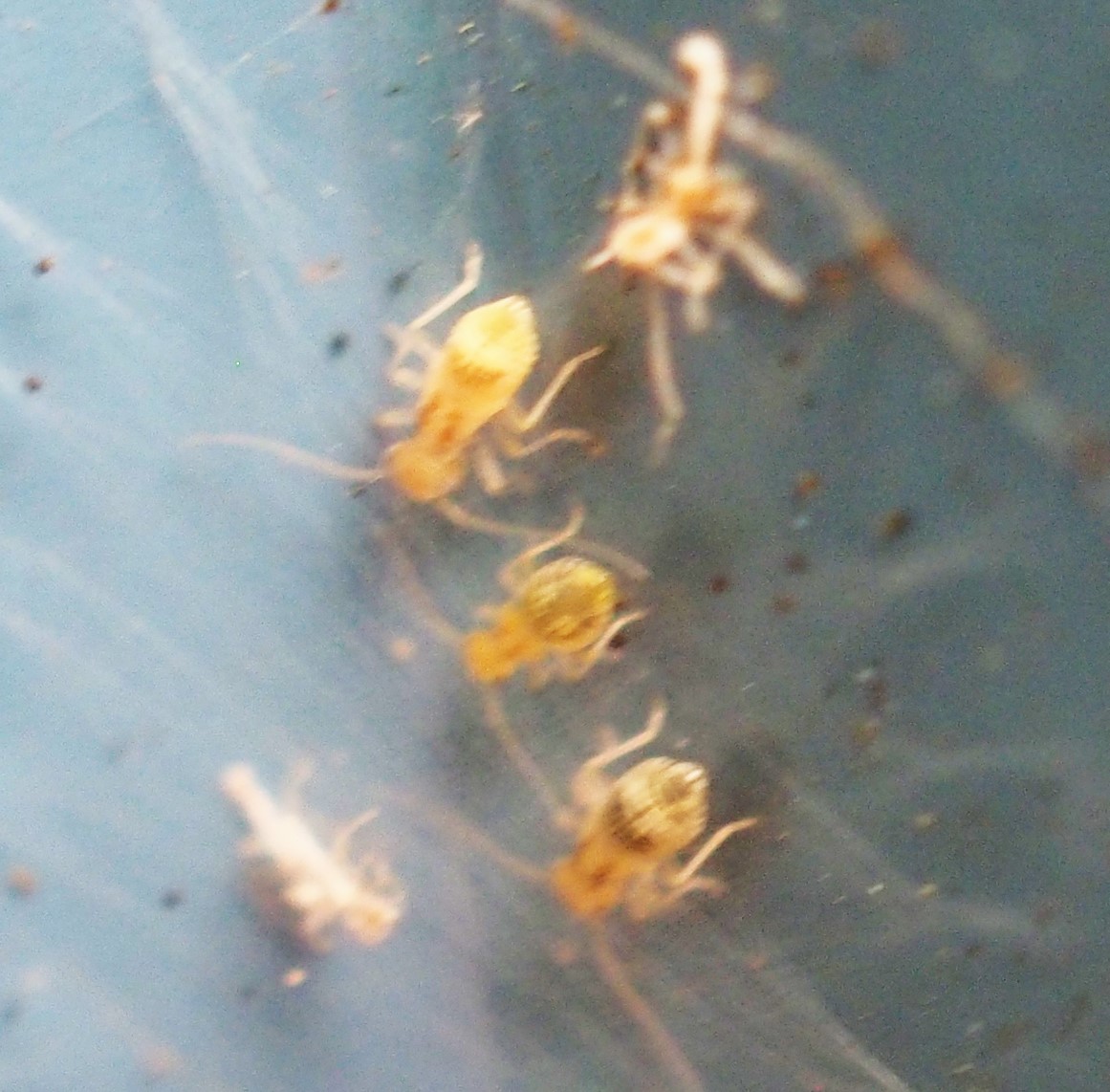
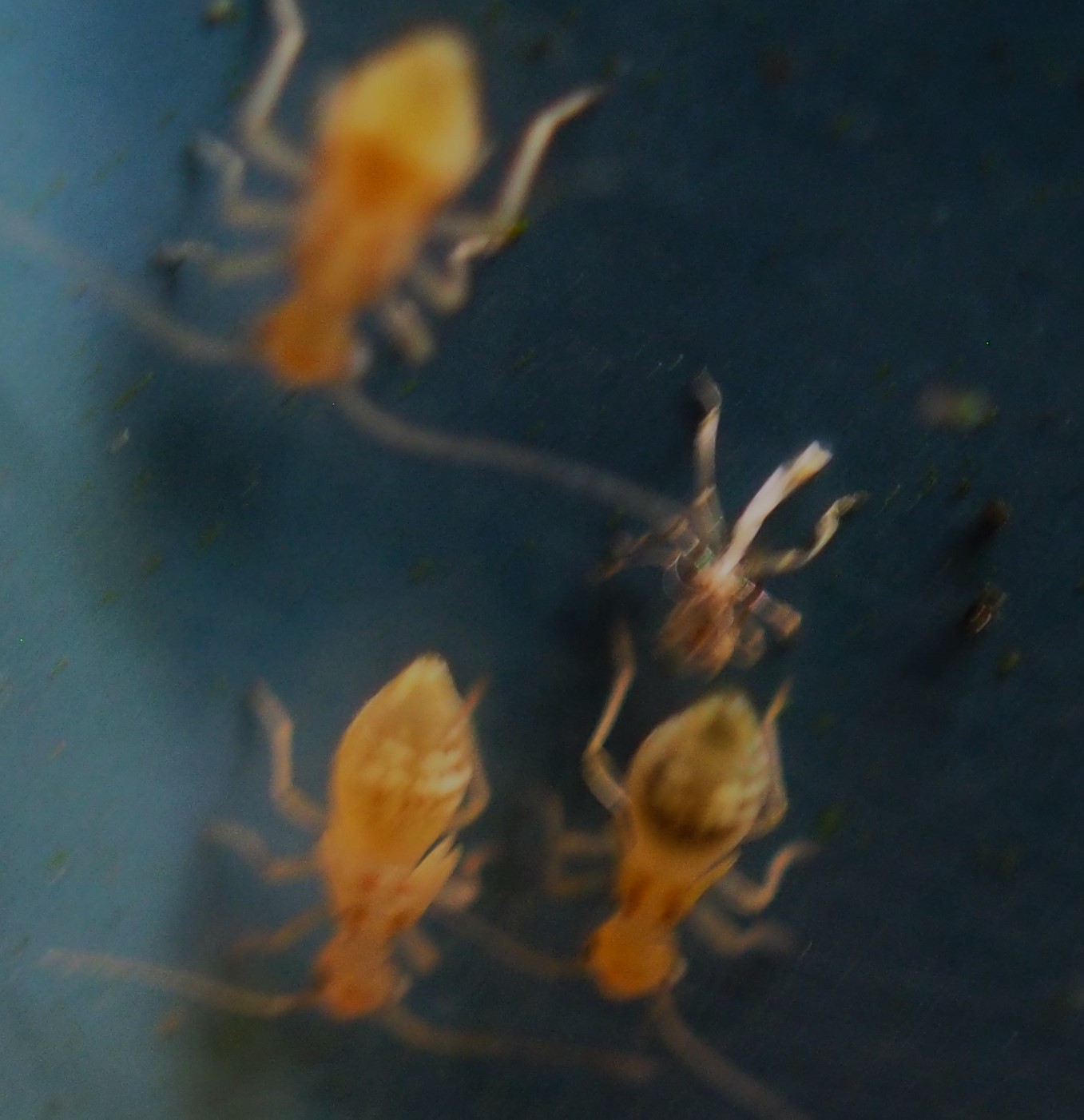
Here is barklouse echmepteryx hageni with its shaggy coat (note: echmepteryx means scaly-winged) and green eyes. Second is Polypsocus corruptus, and third is an adult in genus Trichadenotecnum (the one whose nymphs coat themselves with substrate particles so that they look like lumps of dirt).

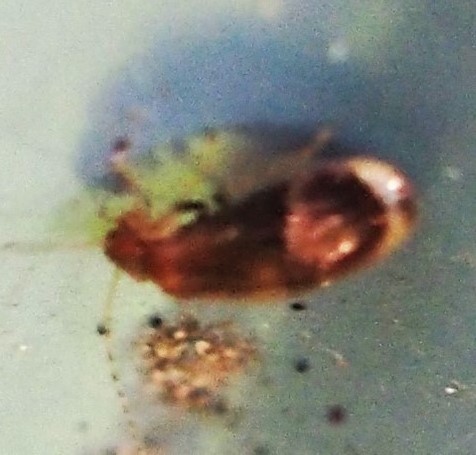

Correction: Last week I reported that we had observed a metylophorus novaescotiae adult hatching out. But Scott Shreve of iNat has corrected this: "M. novaescotiae has six spots on the head; M. purus has four, in the configuration seen in the picture. You can't make it out in this image, but M. purus also has the distal margin of the pterostigma outline by a thick, dark vein."
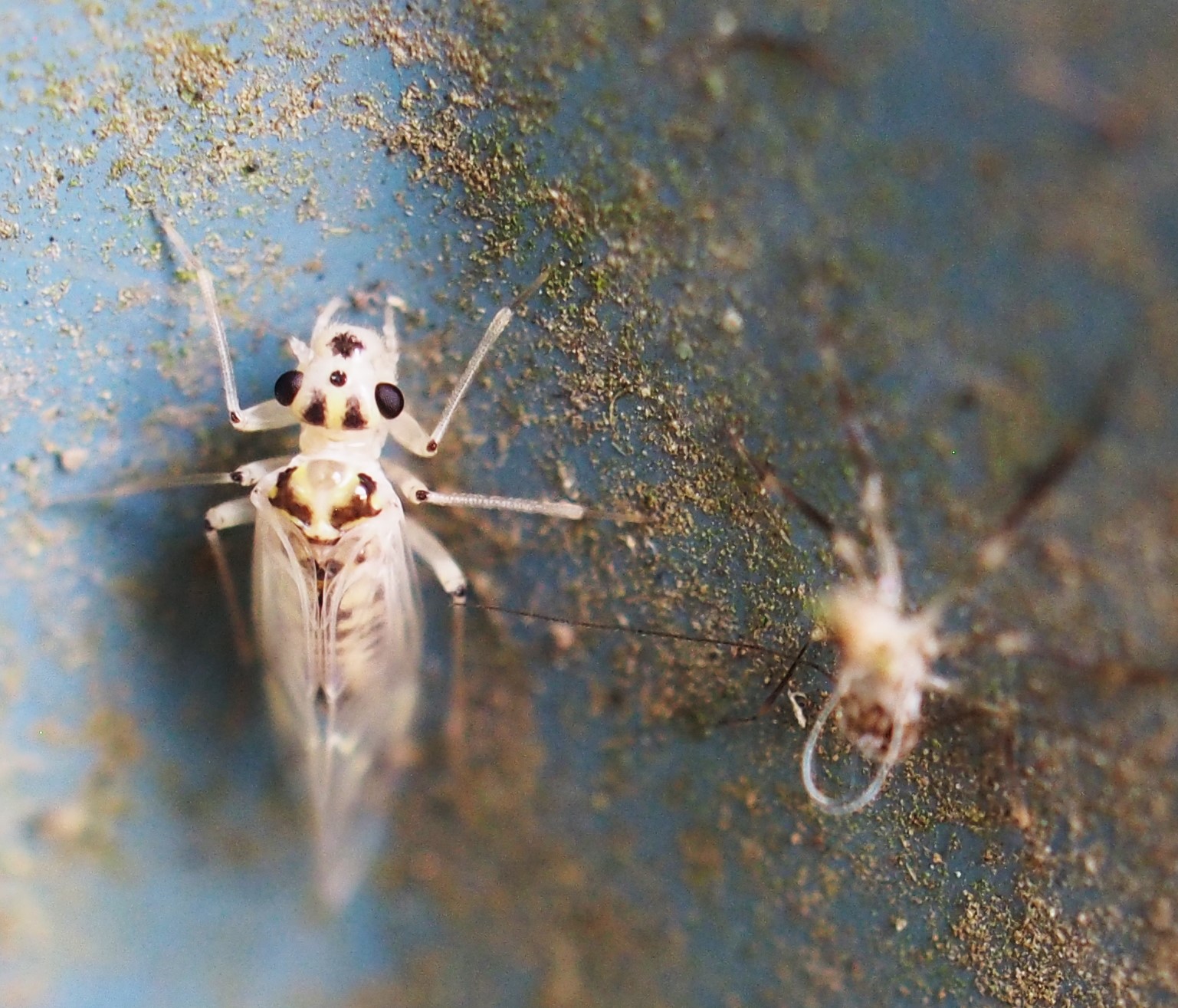
Before we get to the Flies, here is one Dragonfly (probably the Autumn Meadowhawk)
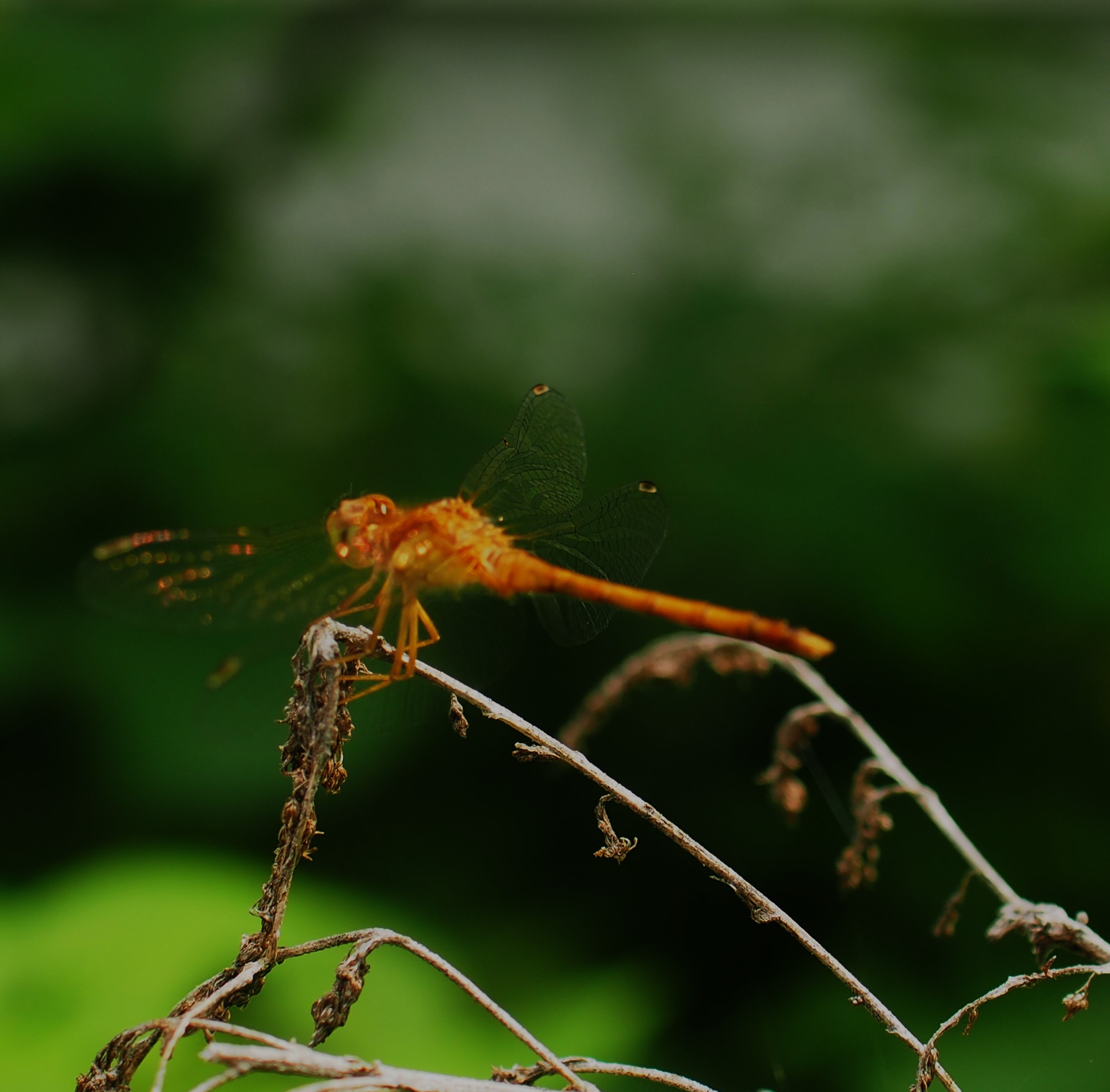
Now we can move on to the Flies. First is a very pretty little Crane Fly, probably a Tiger Crane Fly, says @stephenluk of iNat. One of the defining features of the one he's aiming for isn't in focus in this picture, so we're stuck at Tiger Crane Fly. Second is a tiny green-eyed Fly in genus Neurigona, one of my favorites because of all the colors. Third is (again a very tiny) Hover Fly, Toxomerus geminatus.
.


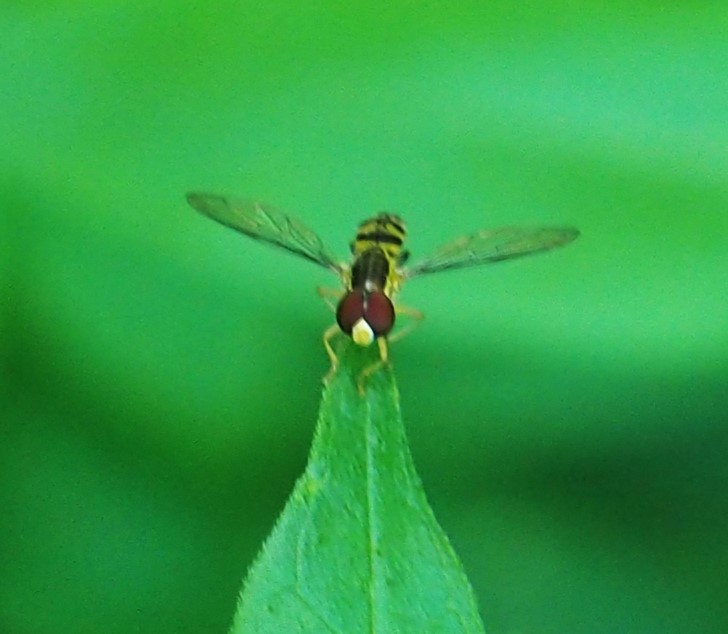
Here are a few little Moth Flies. (Remember, they are Flies masquerading as Moths.) I'm not sure what species the first one is, but the next two are Bathroom Moth Flies.

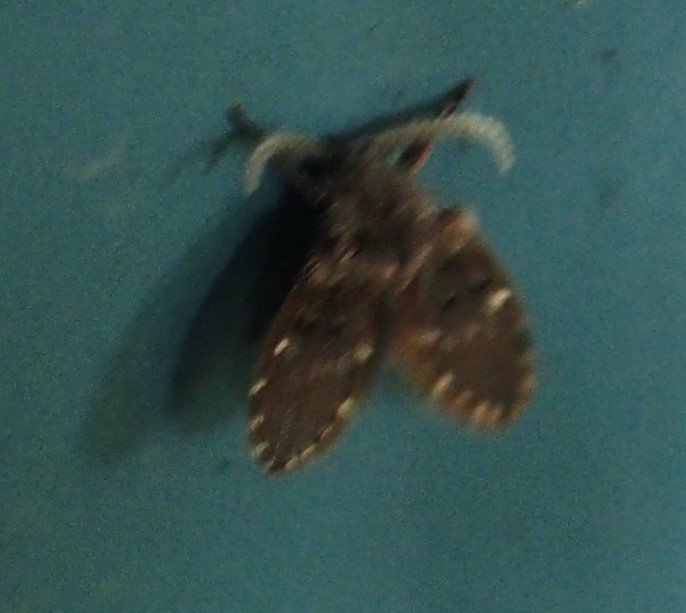
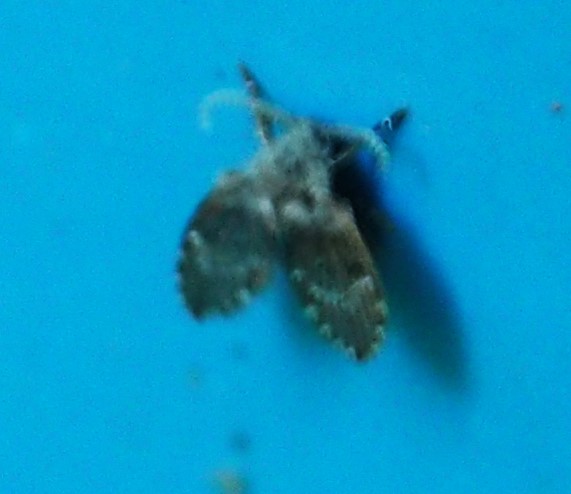
Here's an addition to a Fly from last week.On to the Flies! @zdanko of iNat had identified it as an Acalyptrate Fly in the Zoosubsection Acalyptratae. But this week, @spencerpote of iNat narrowed it down to a Marsh Fly. The next one, which I called a small Fly resembling a Housefly
still seems to be about that. This week we added a Robber Fly in subfamily Asilinae.

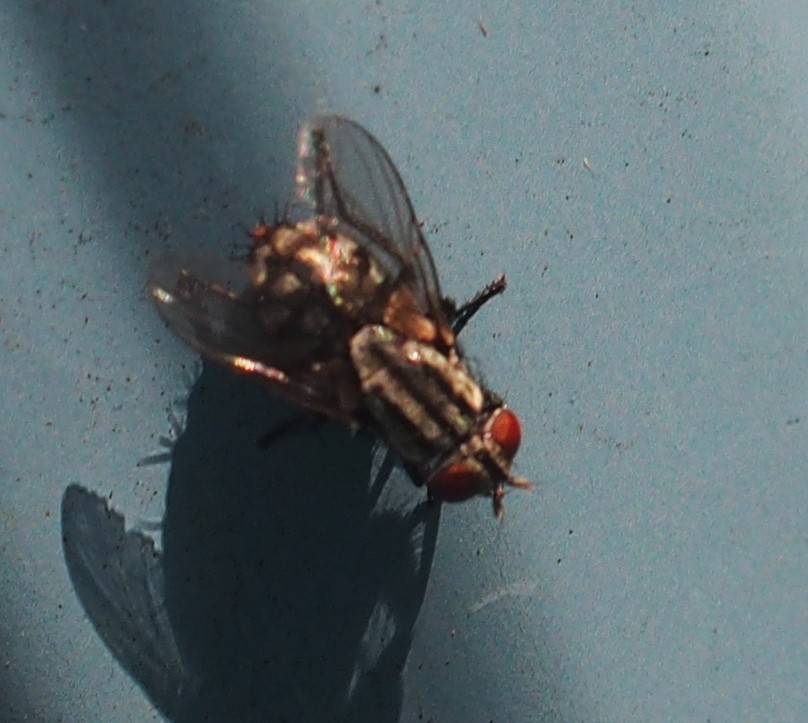
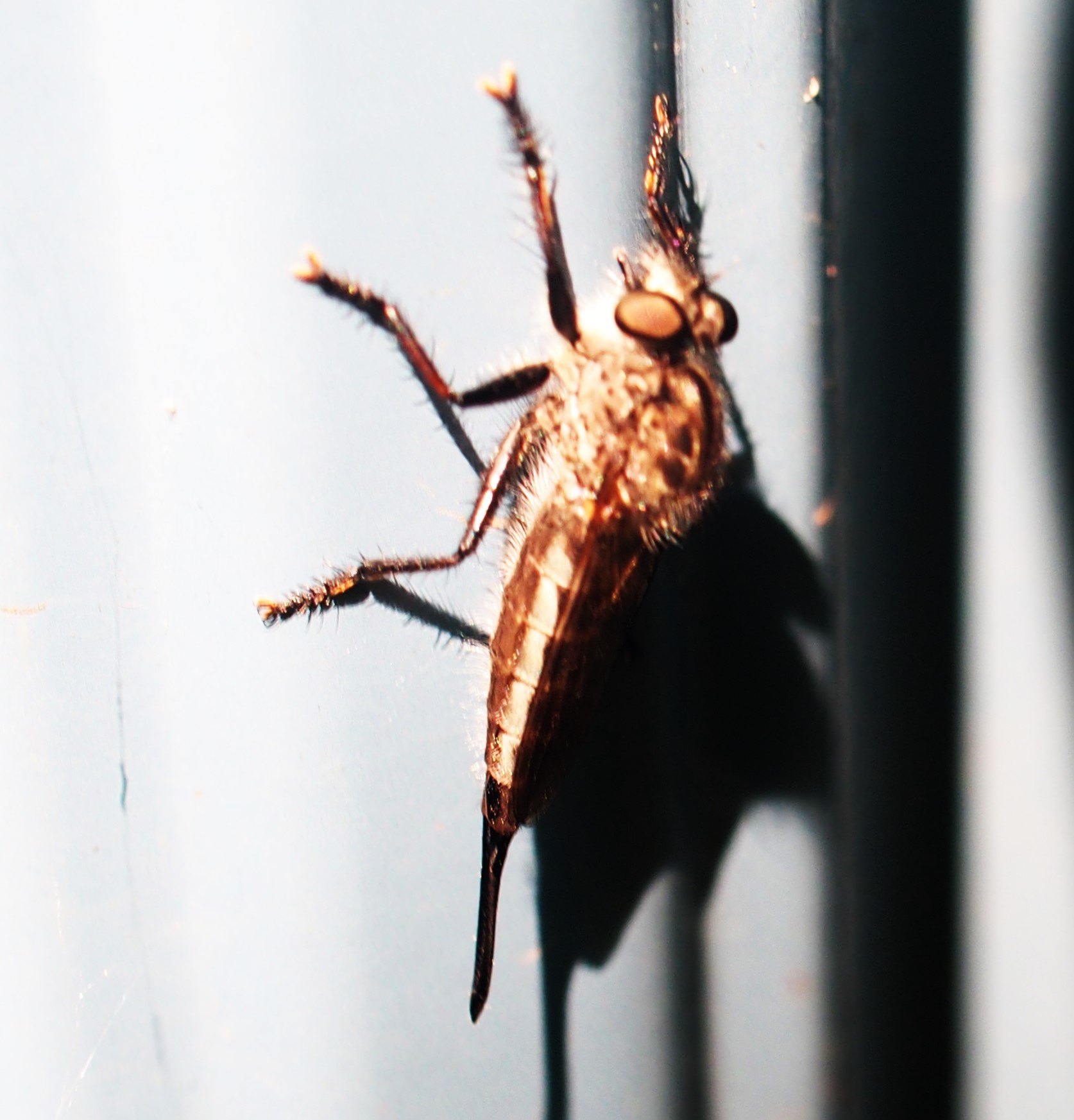
This first one belongs to tribe Pteromalini. Next is a Woodlouse Fly - remember, Woodlouse is another word for a Pillbug. Third is a Woodpecker Fly - make of that name what you like!
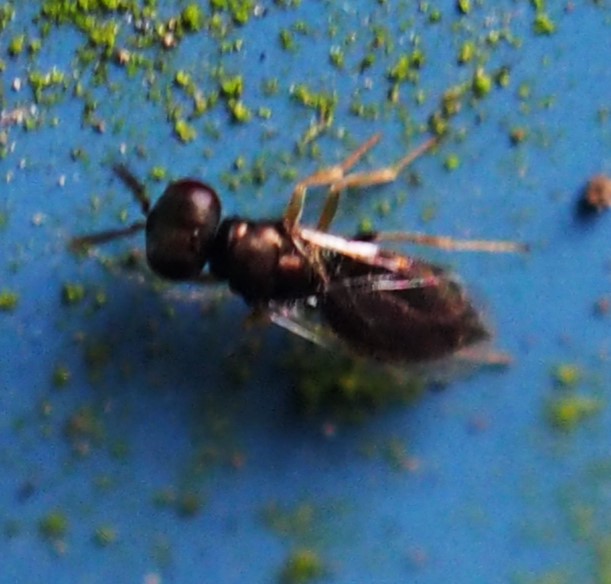
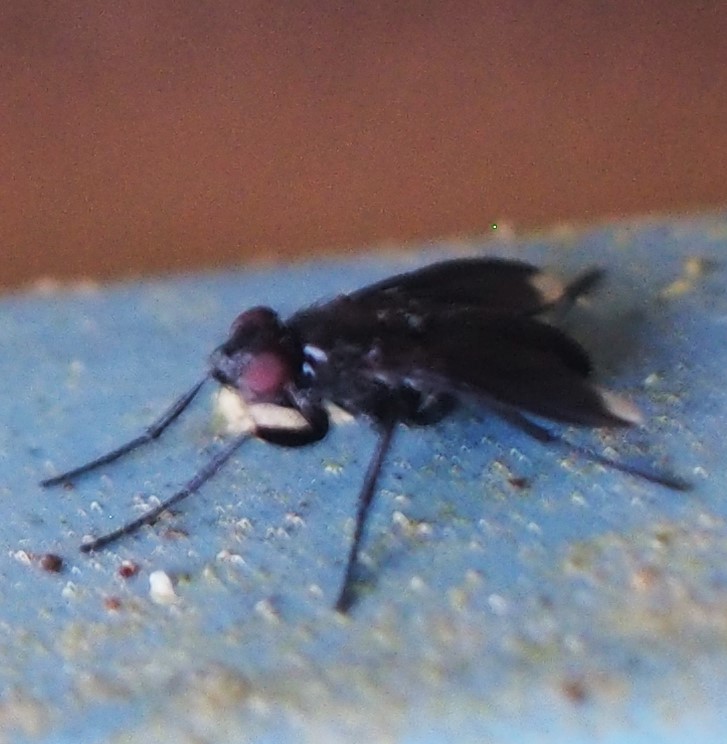
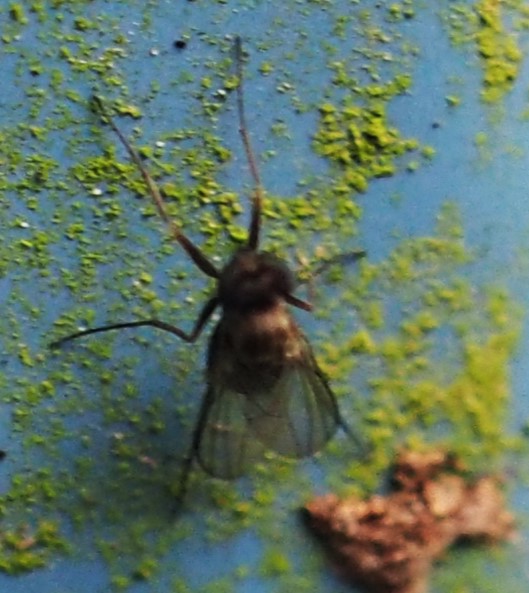
Here is another of those little Flies with lots of colors in their wings.
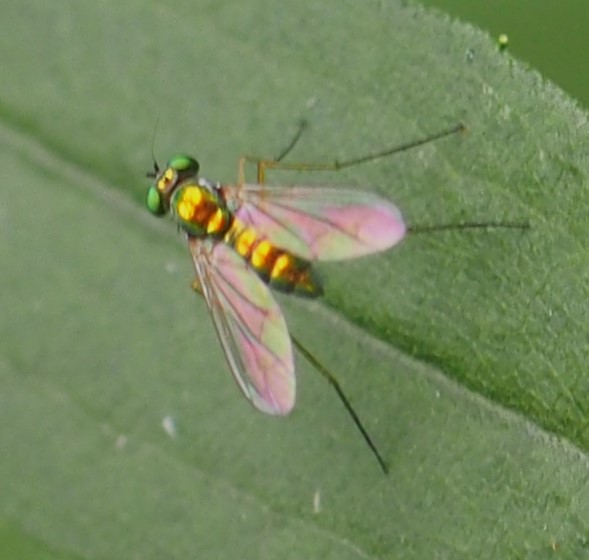
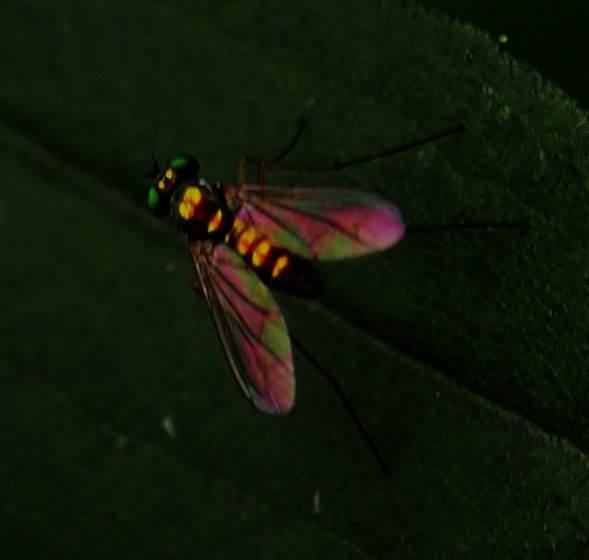

That's about it for the Flies that visited this past week. But here are a few Lepidoptera I have to share. Actually both this Caterpillar and this Butterfly were found at the Seidls' gorgeous garden. (Since my garden has now become much more wildified than previously, I welcome people with the more amazing Butterflies to send me the really amazing pictures. That includes you!) Oh wait, there IS one Butterfly (actually Skipper) picture I took right here in the back yard. It shows a Zabulon Skipper, one of the most tolerant (of picture-taking) Butterflies in this region.
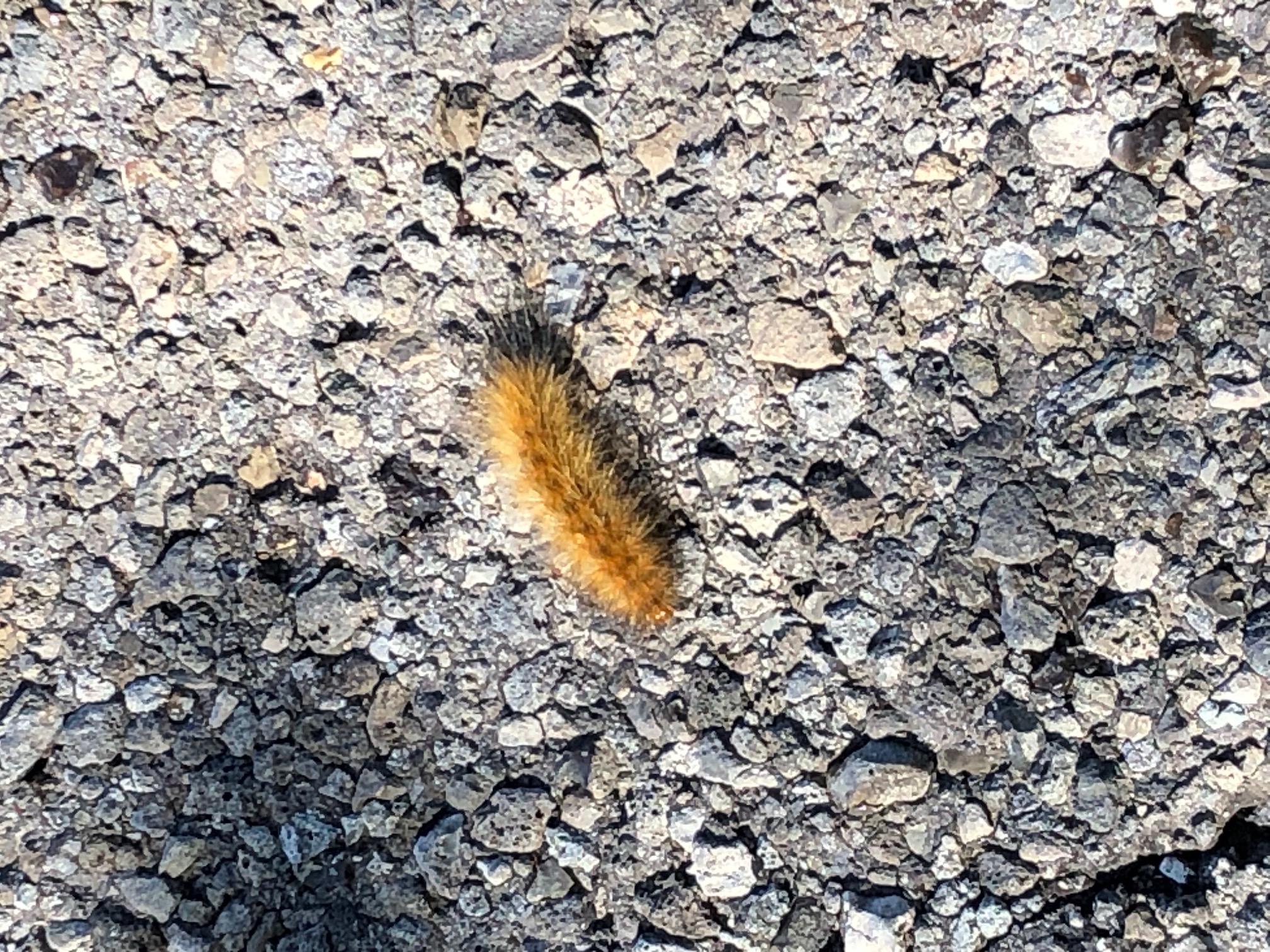
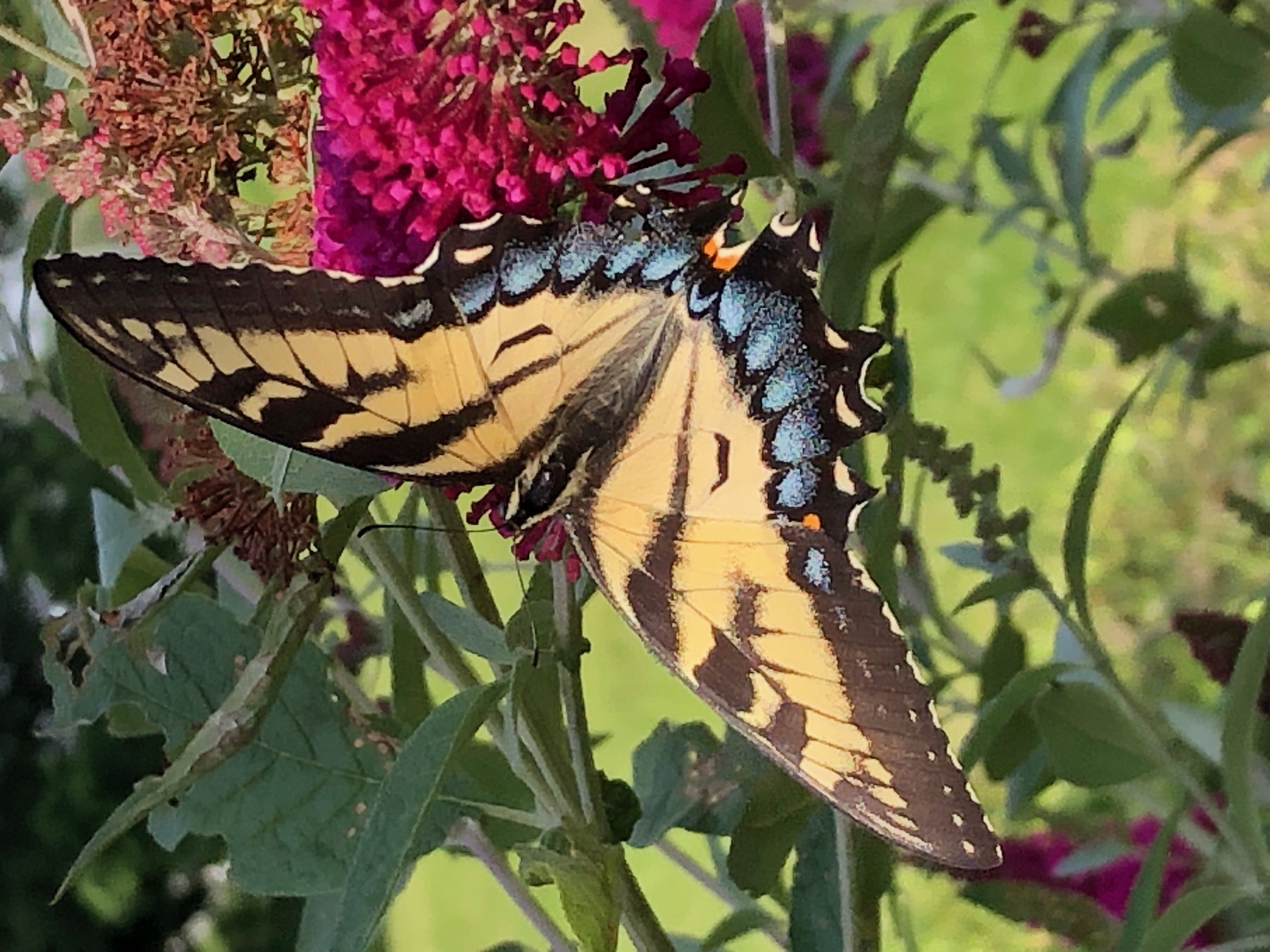
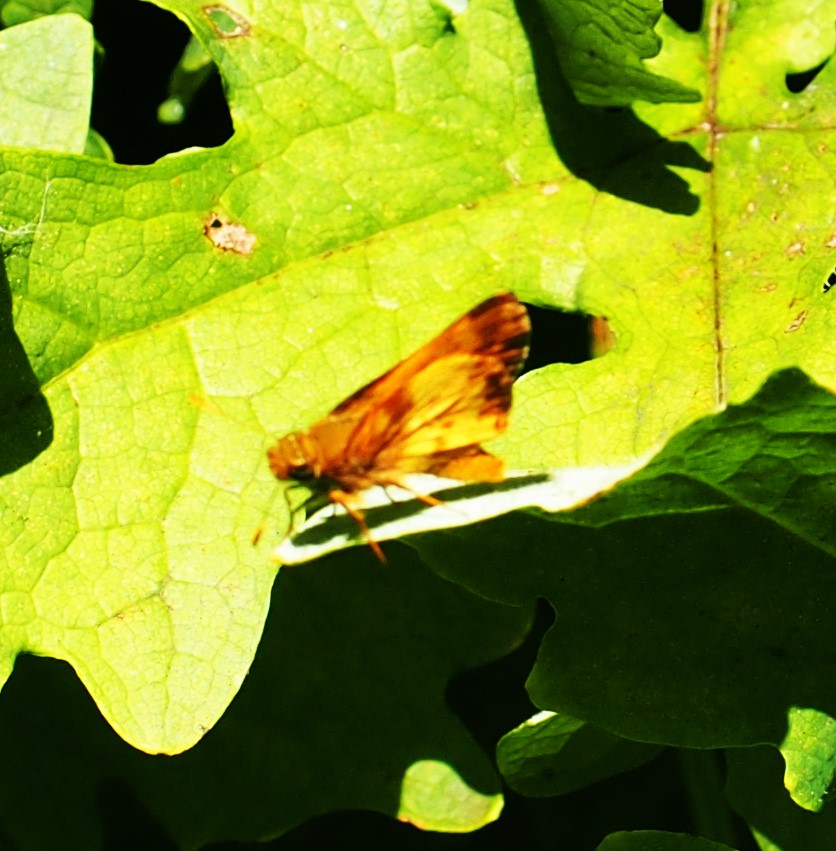
So now it seems time to go on our usual Flower Walk. One of the first Flowers we see coming down the north steps in the backyard is the lovely cultivated Phlox that I bought at Horrock's many years ago.

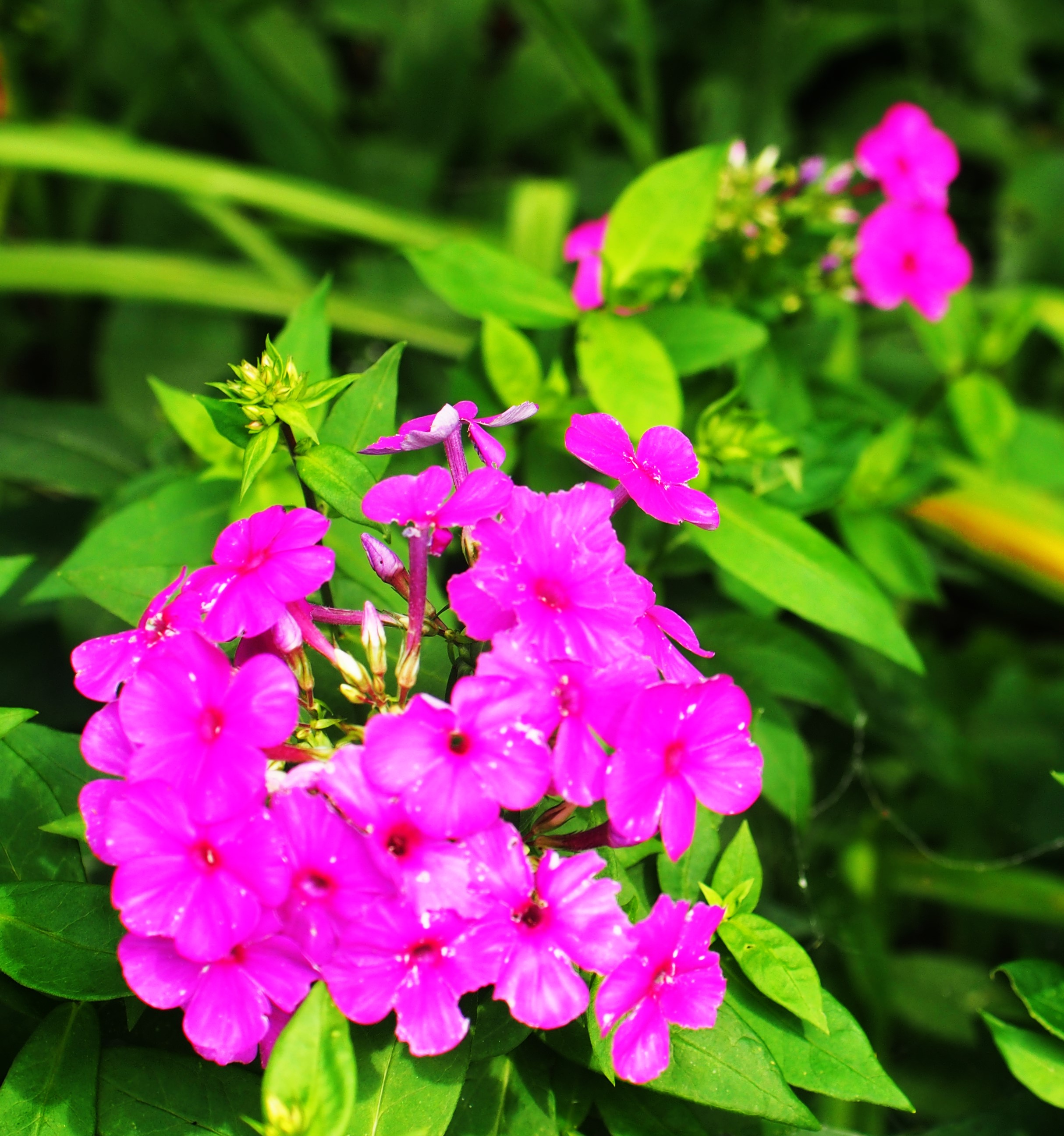
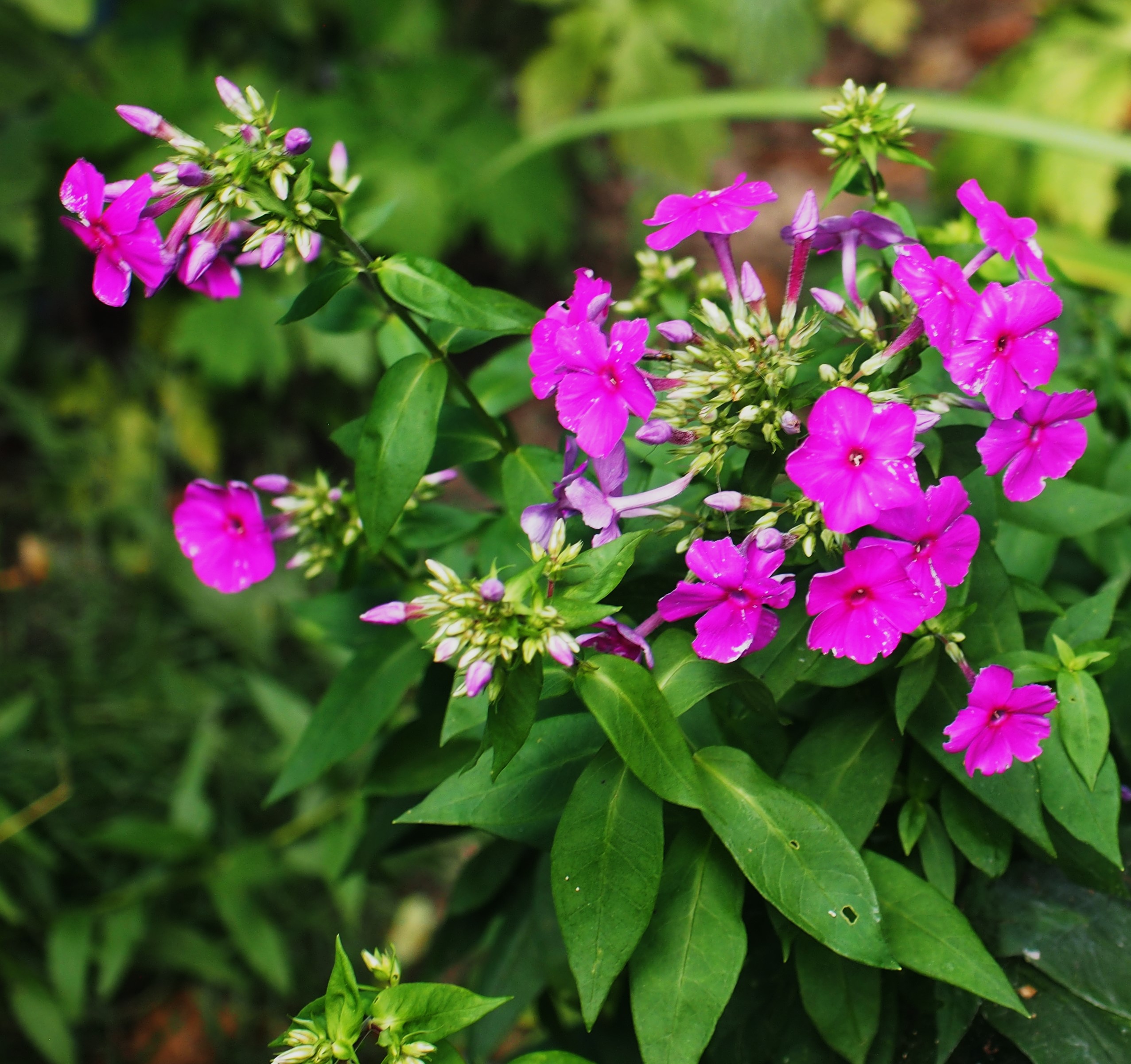
The Water lilies that I bought a few years ago are finally having some good bloom times. Here is one with a TINY little Green Frog sleeping in one of the blossoms. There are two kinds of Flowers at this point. One is more or less white with rose centers, the other has more of a golden pinkish glow. The second picture shows a bit bigger Frog on his own leaf.

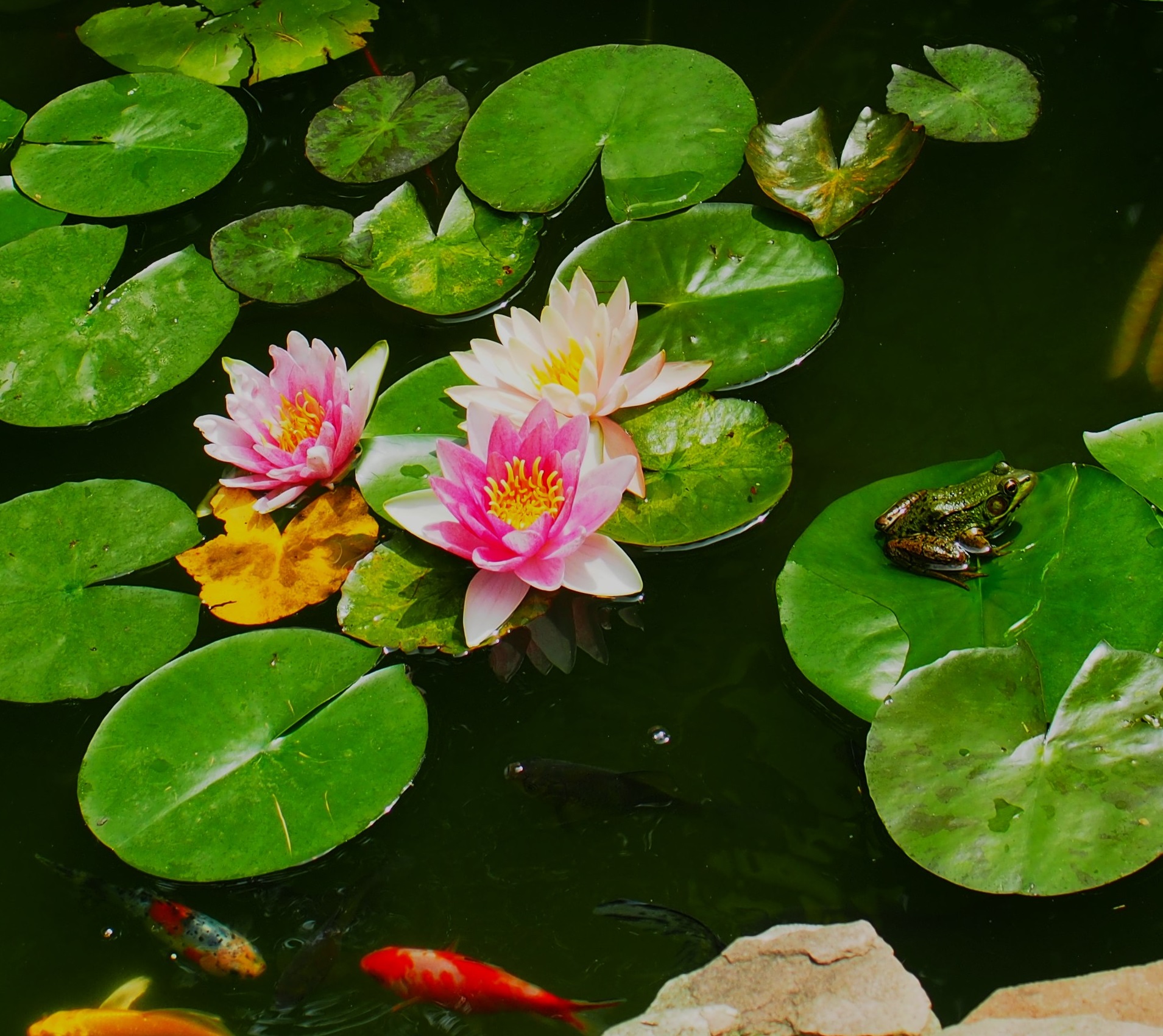
In the deck box, this sage is re-blooming. Meanwhile in another spot, the Yellow Wood Sorrel is just getting going. Finally, some Asiatic Dayflower.
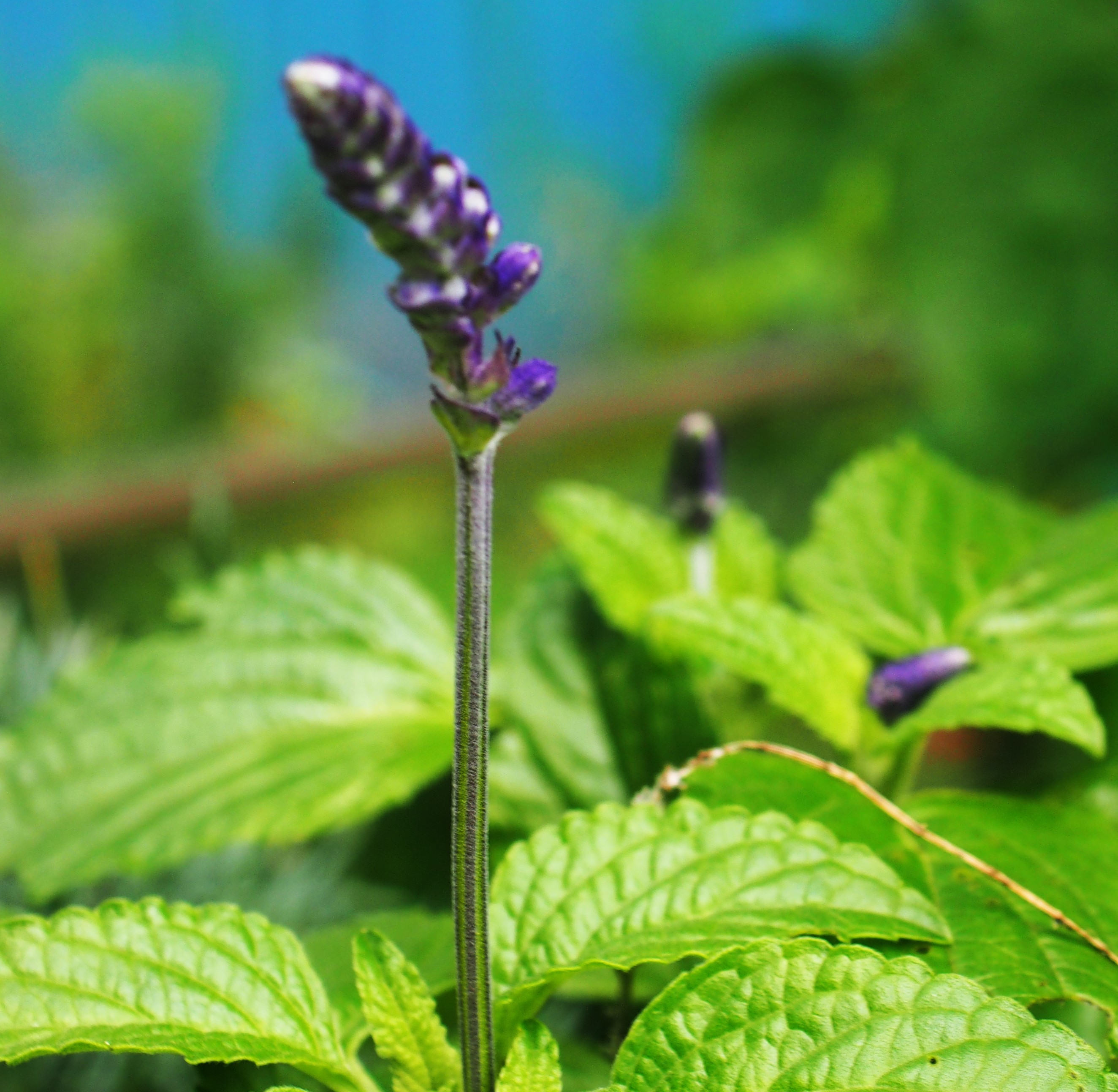
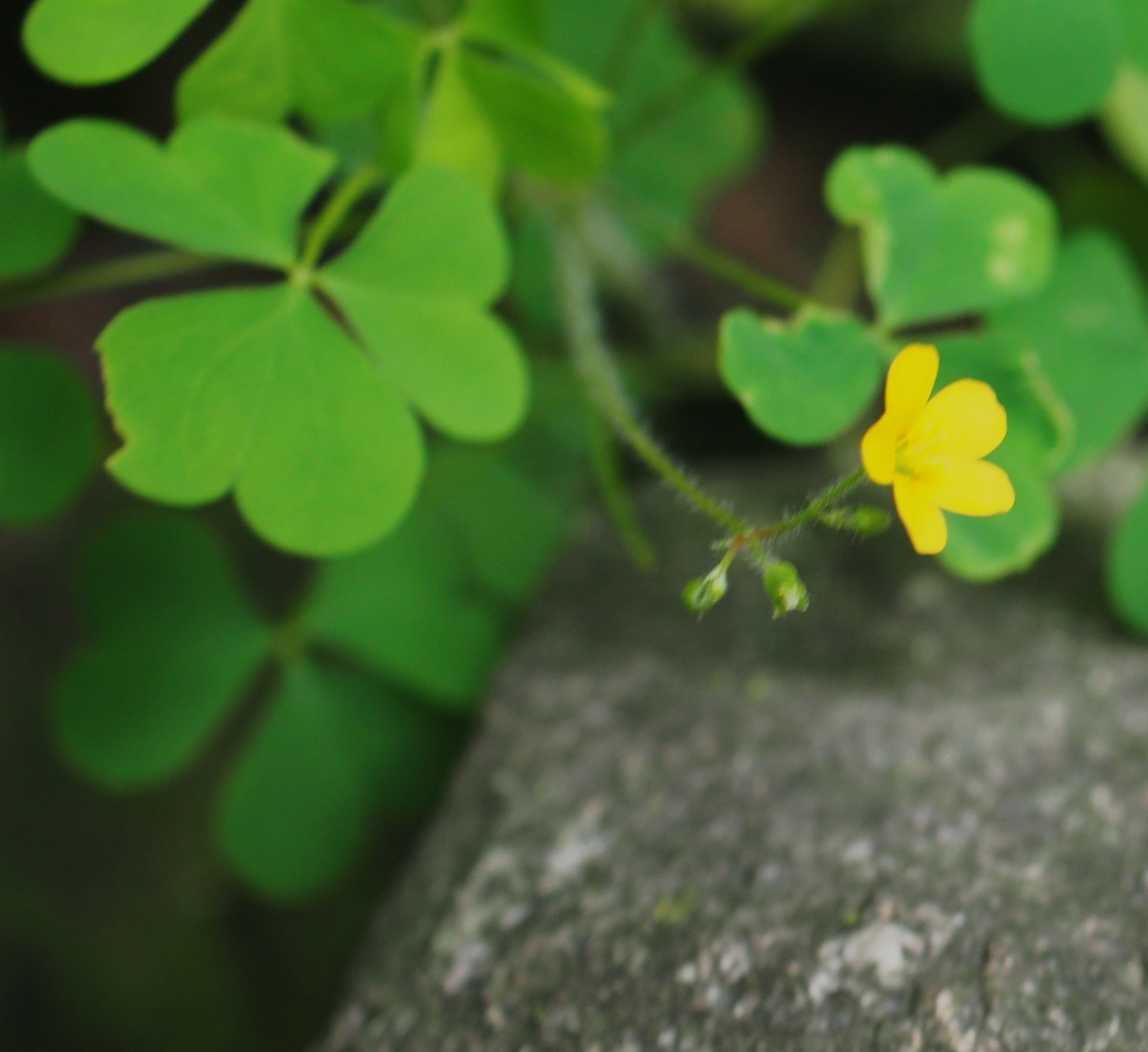
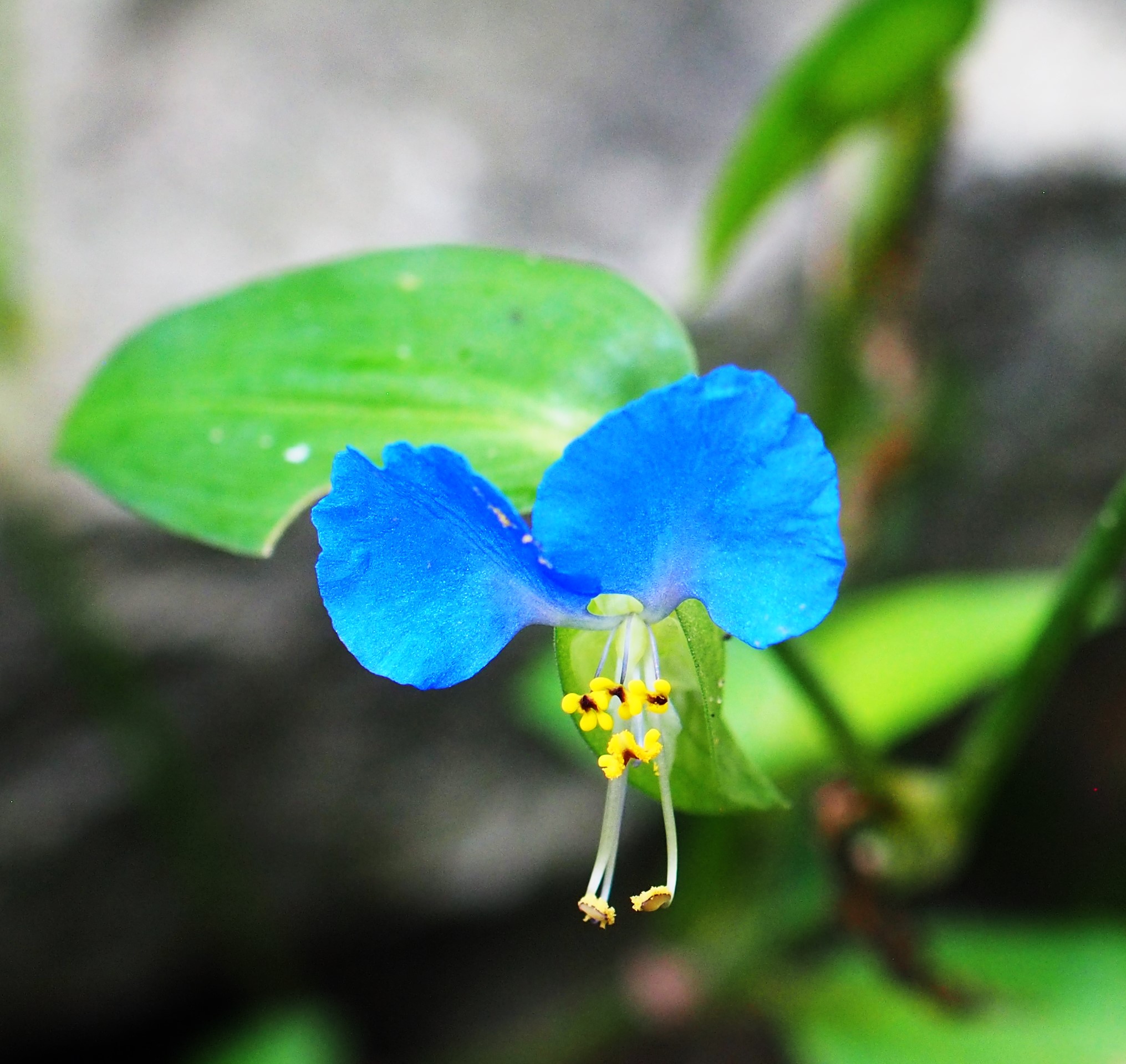
Oh! One more thing to see! Remember all those flowers Betty Beese gave me (and probably most of you too)? One that you may or may not still have is the tiny little Astilbe that is growing at the bottom of the stairs on the north.
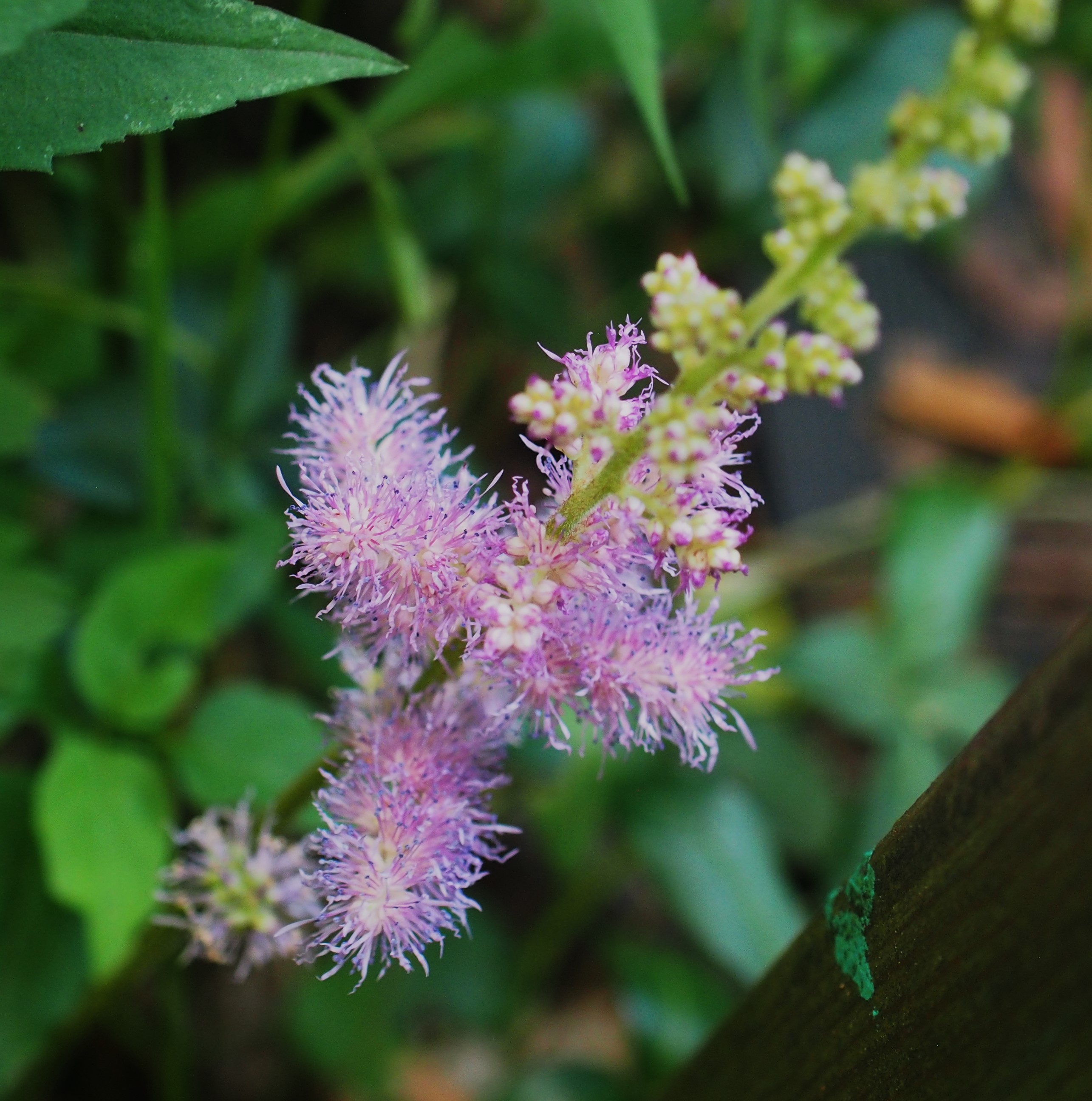
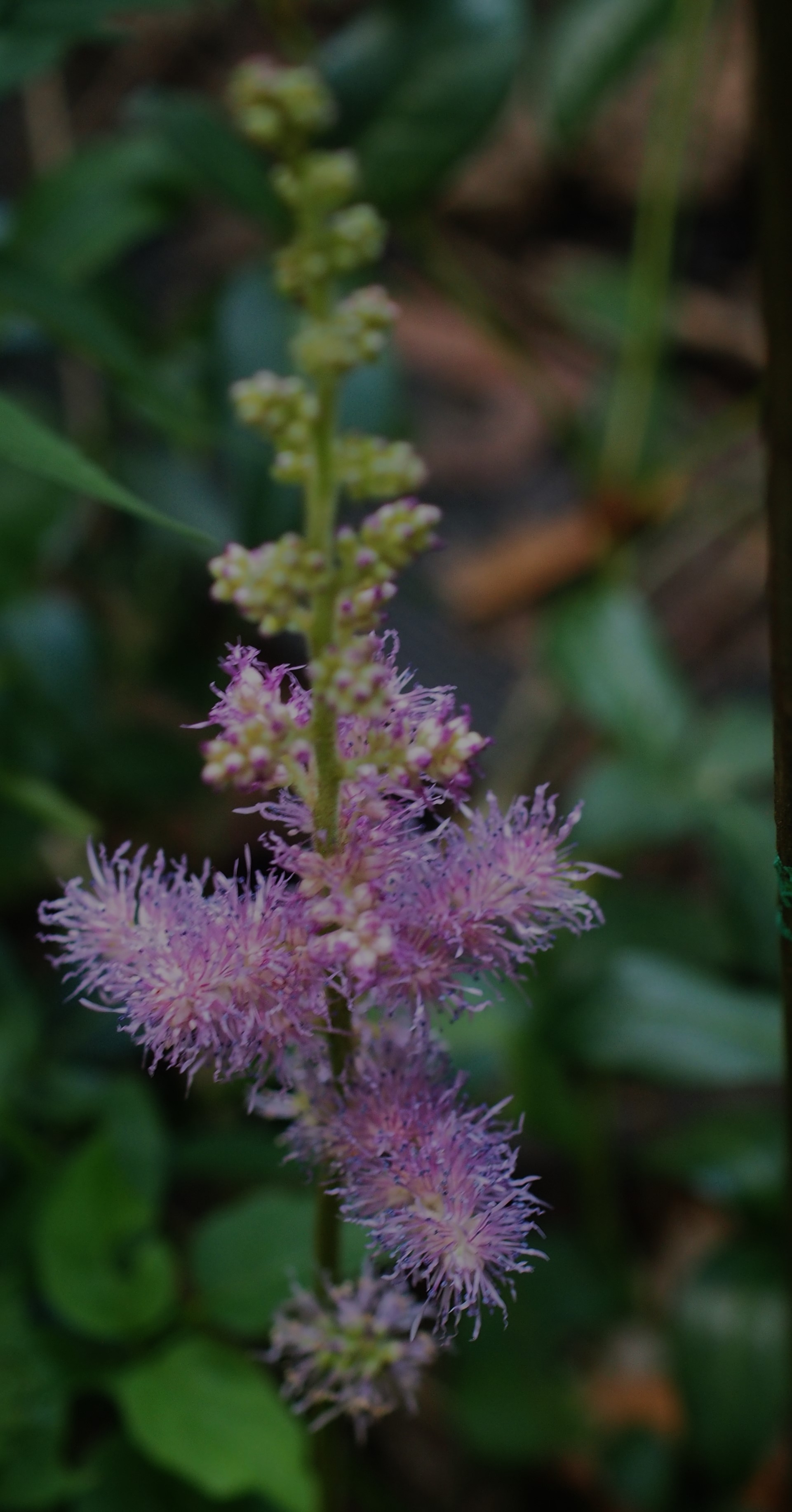
Let's see how we're doing with the Spiders. Here is one that @tigerbb of iNat diagnosed as a
Colourful Comb-footed Spider. They look like great ballerinas, but this one is a male!
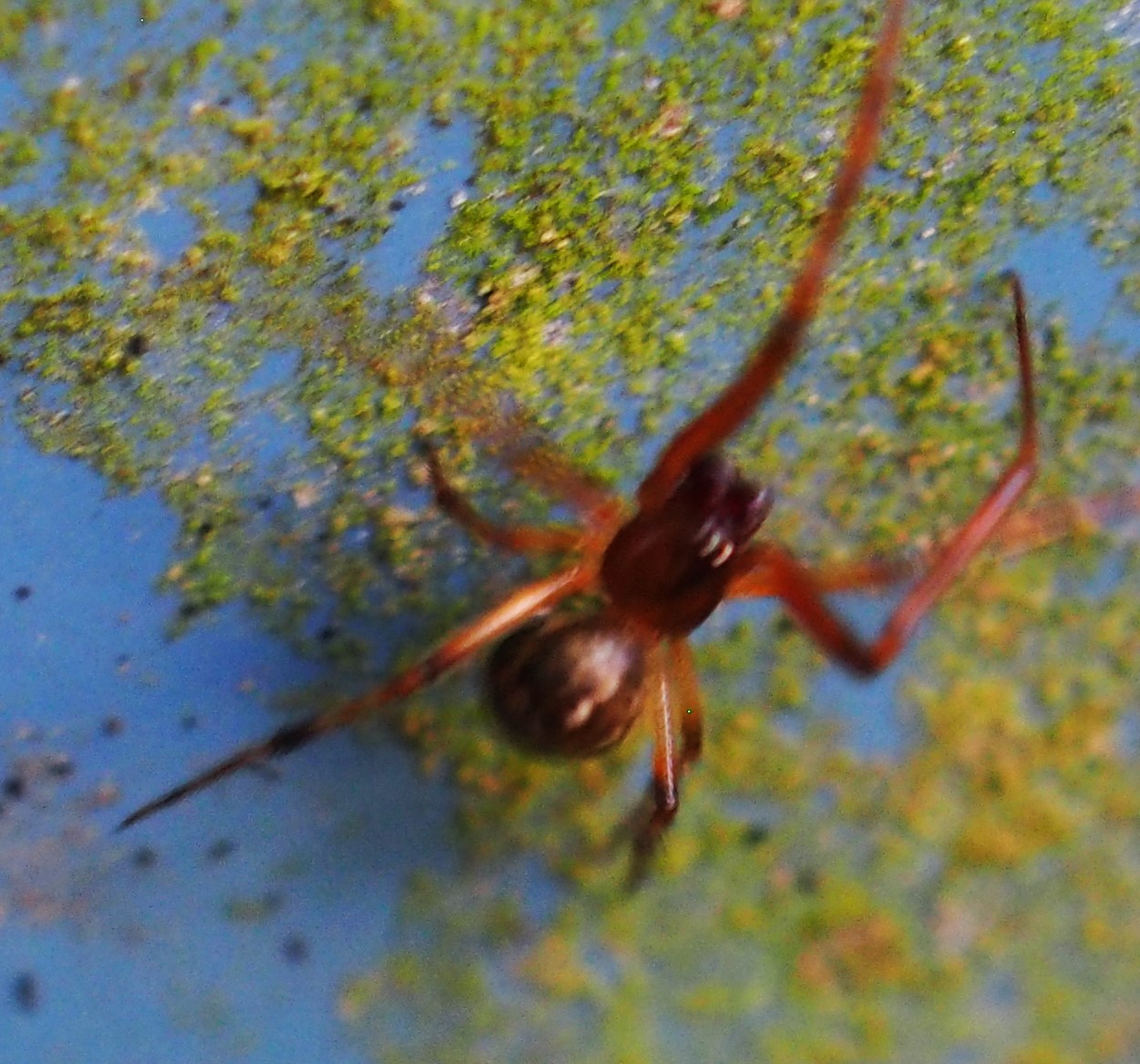
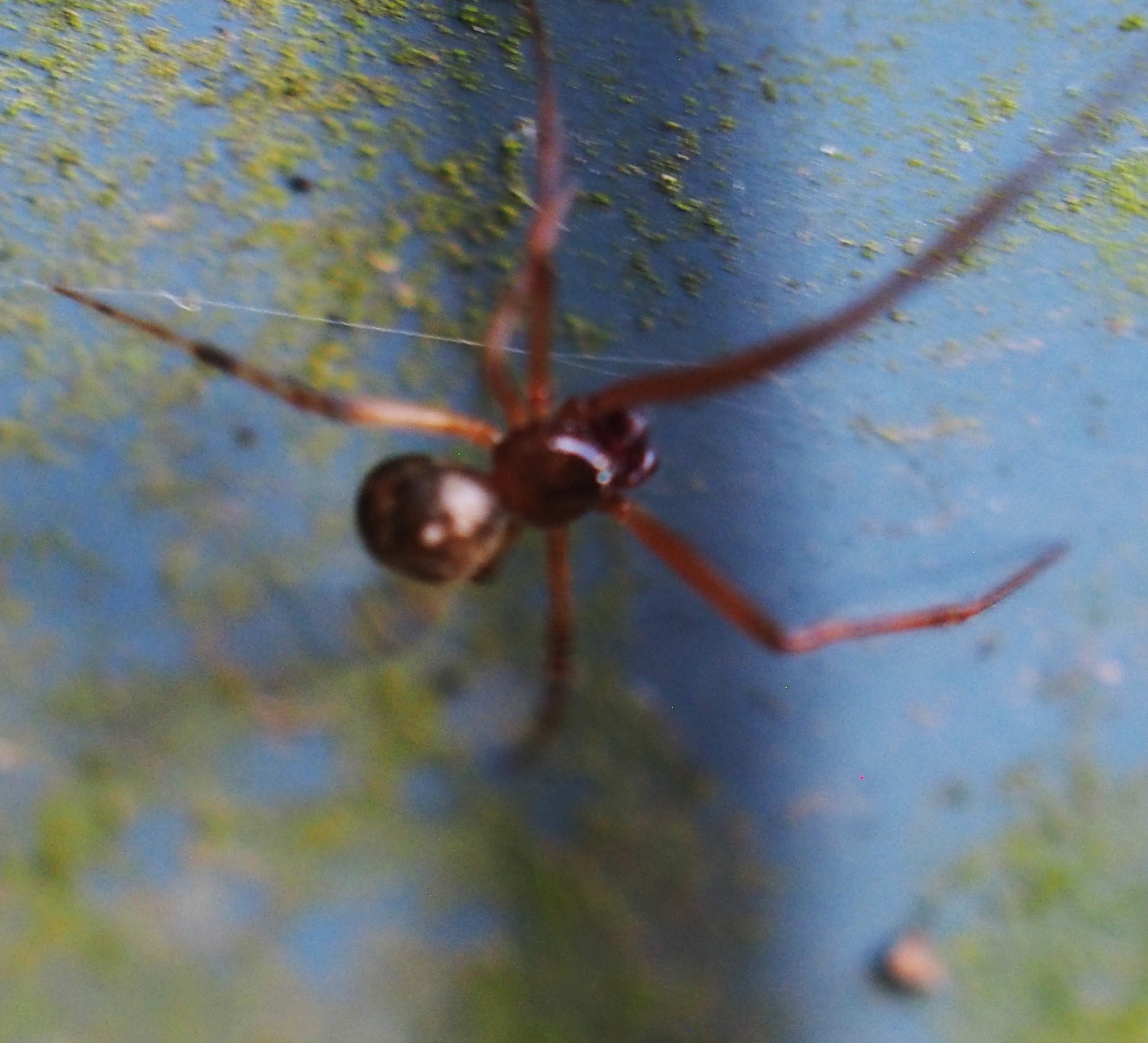
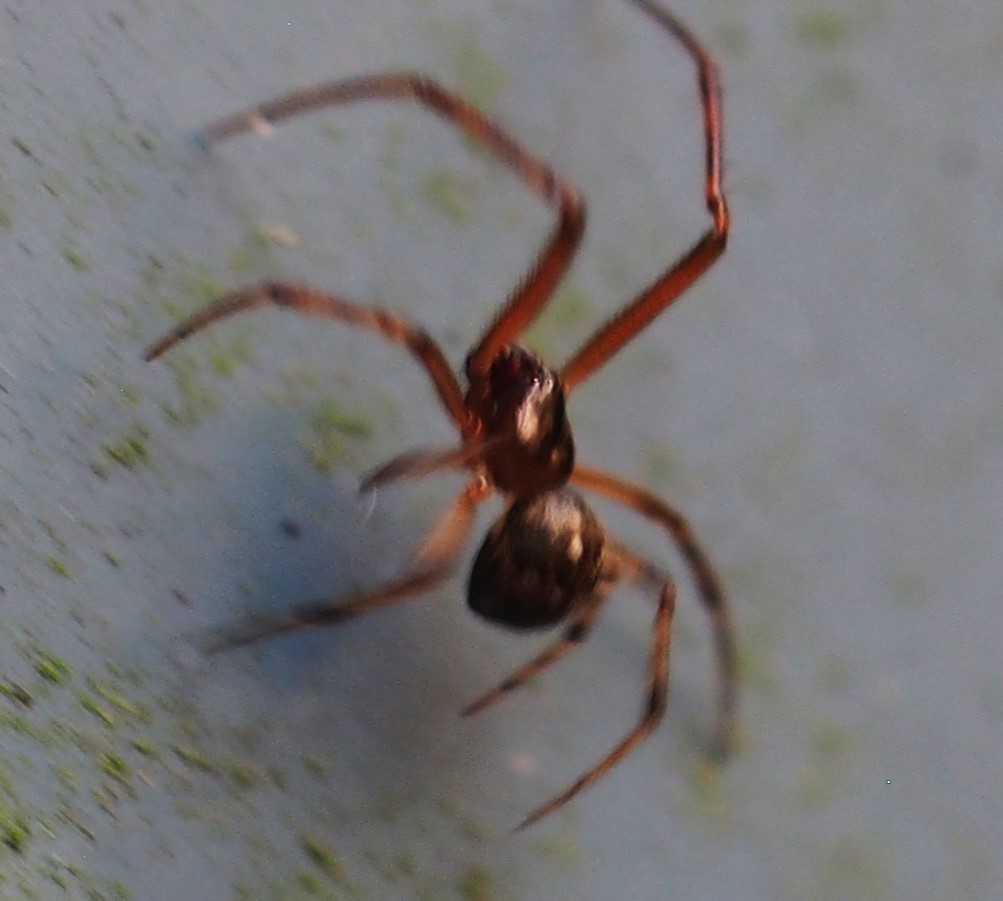
That was about the most exciting thing about the Spiders that I can recall of the week's roaming. But here are a few more! I have no idea what this one is yet.
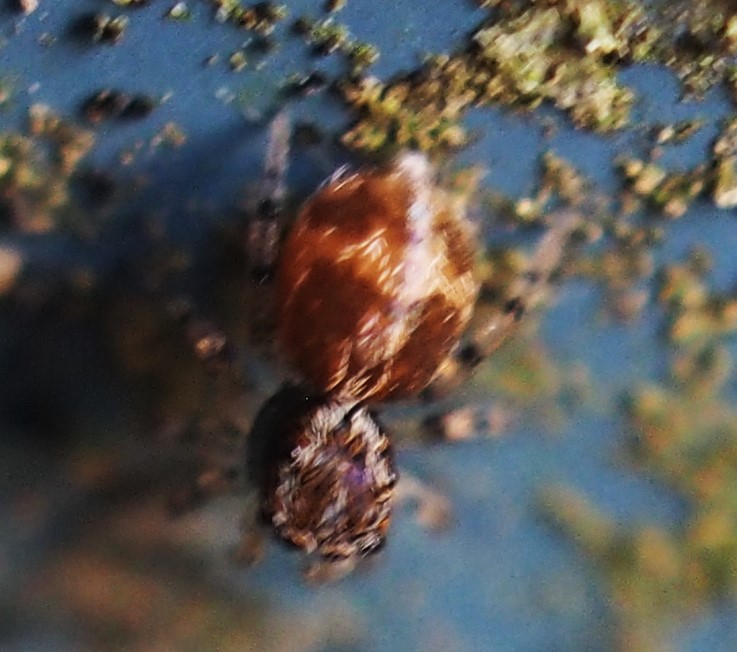

A couple more Spiders.
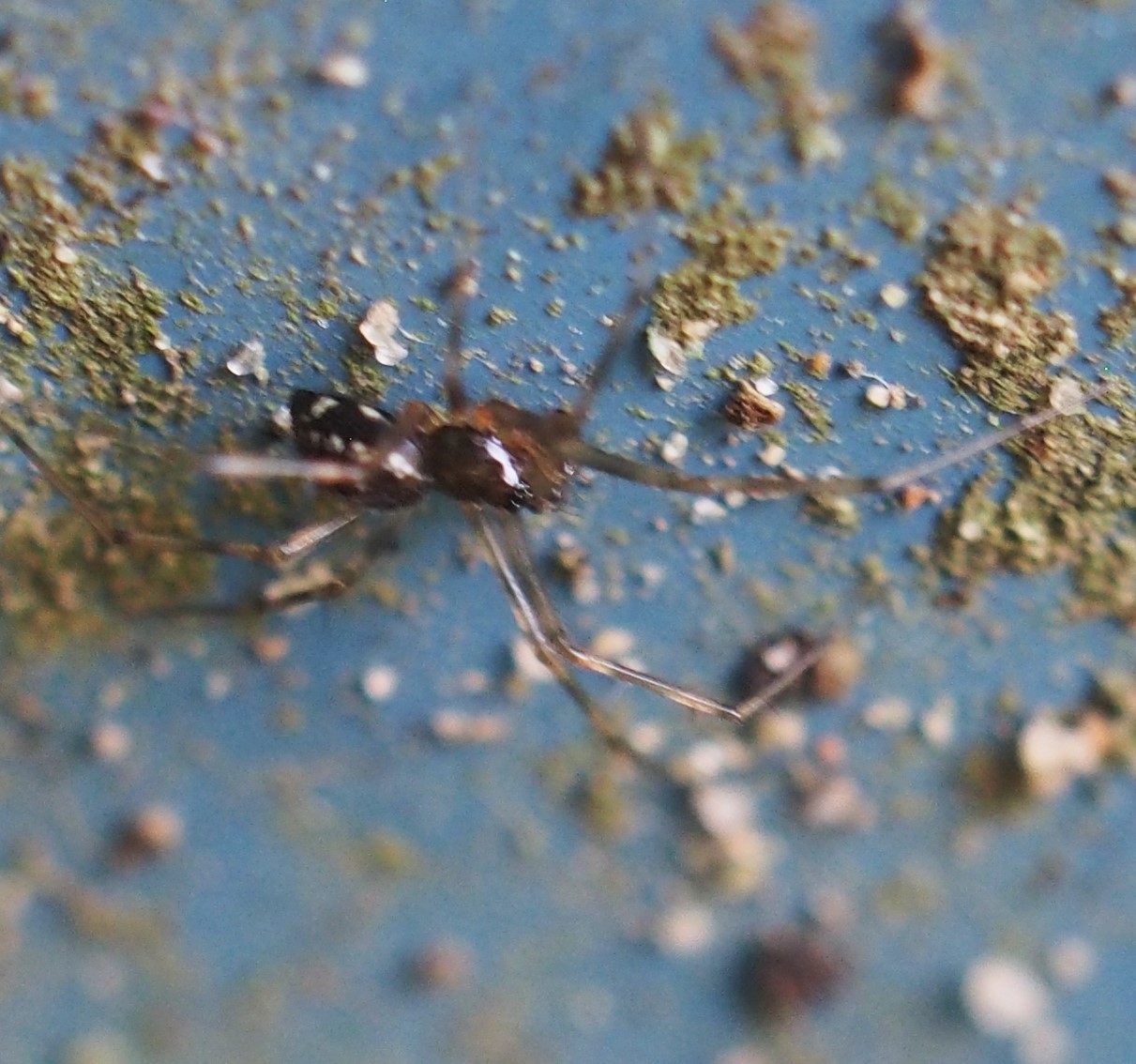
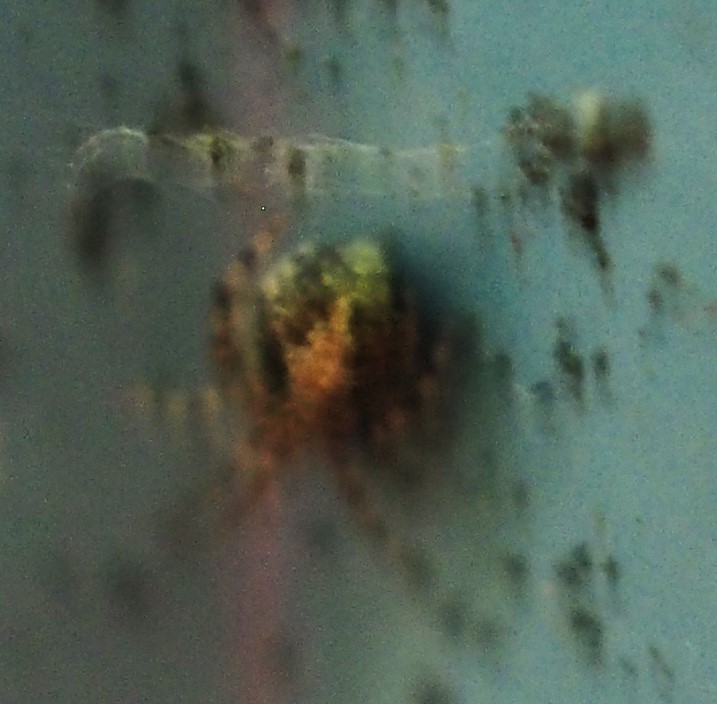

Let's now go to the Frogs. I think these are respectively Spotty and Tonguey, the two big males. Tonguey spent a couple of hours decorating the Waterspout.
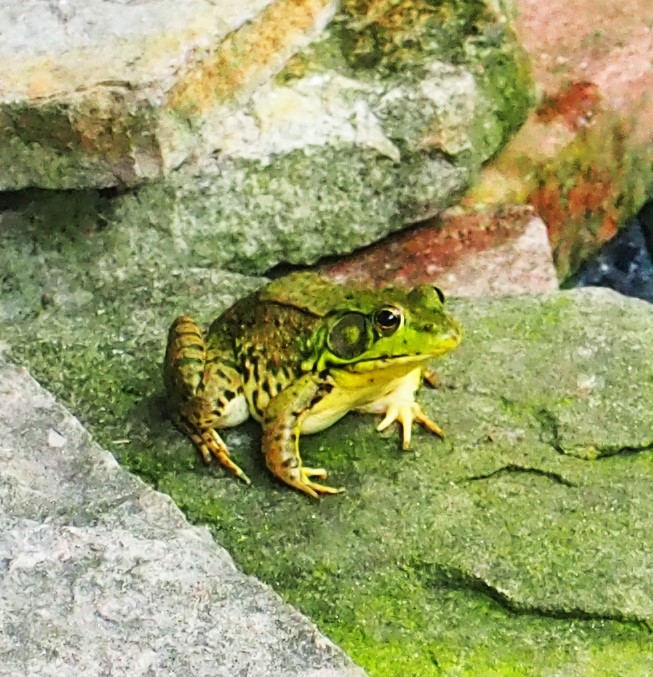
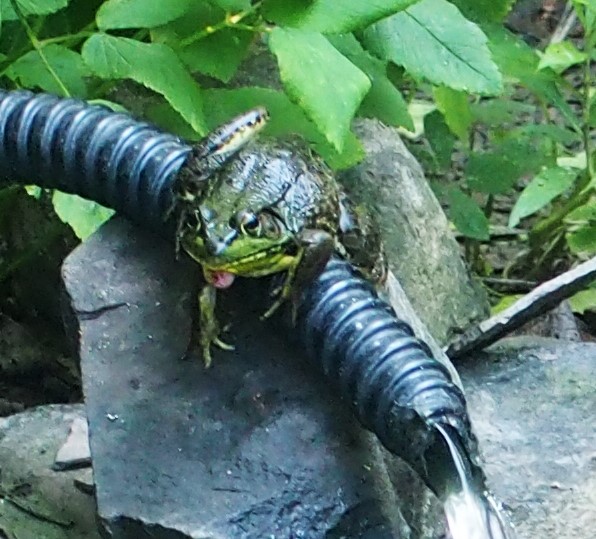
Here is one of the tiny frogs that have been growing out there for a couple of weeks, and beside it one of the bigger males. Second is another of the males.
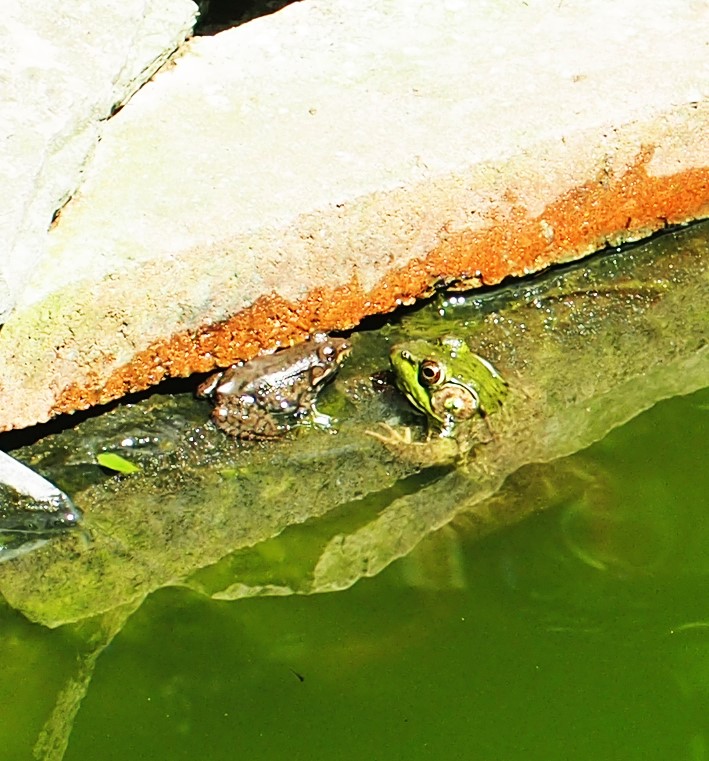
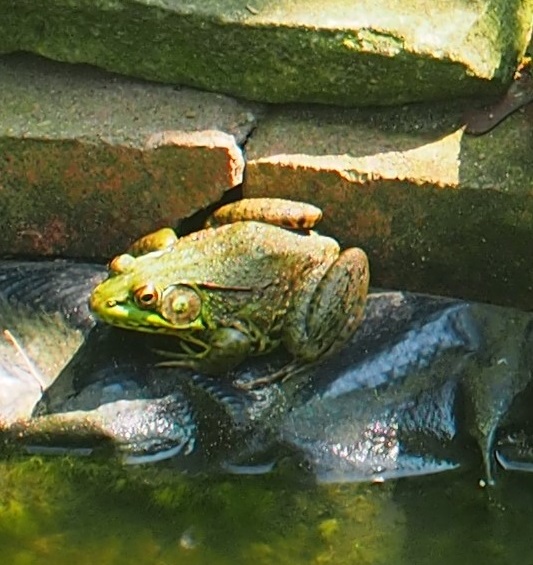
Here is - surprise - a Springtail. I hadn't seen one of these since Spring!

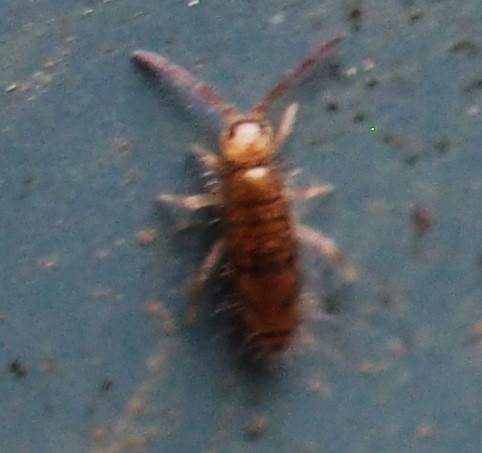
We still have a few Wasps. The first is called a Spider Wasp, which I suppose means a Wasp that eats Spiders. The second hasn't been identified yet but I think it will turn out to be Canadian Potter Wasp, Symmorphus canadensis. Third is a Scorpionfly, in genus Panorpa. You may wonder why I didn't post him with the other flies. The trick here is that Scorpionflies are NOT Flies.
They aren't Wasps either. :-)
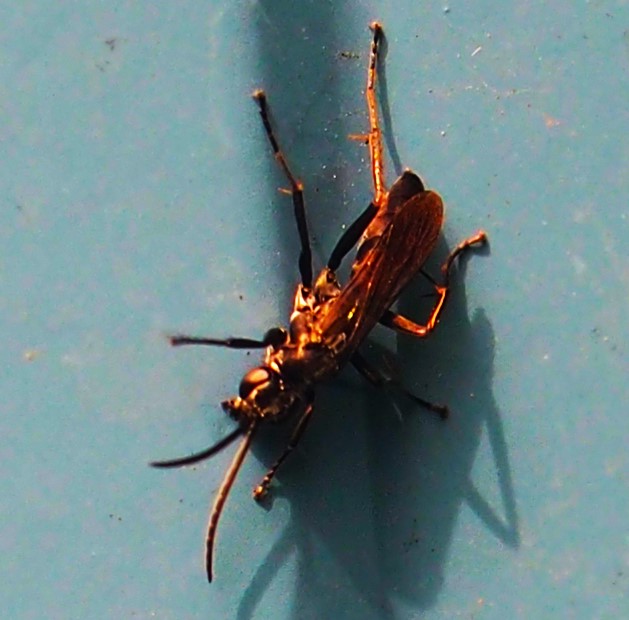
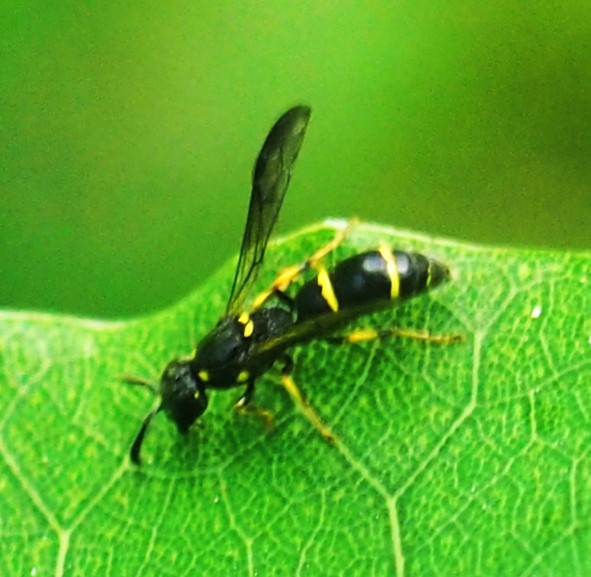
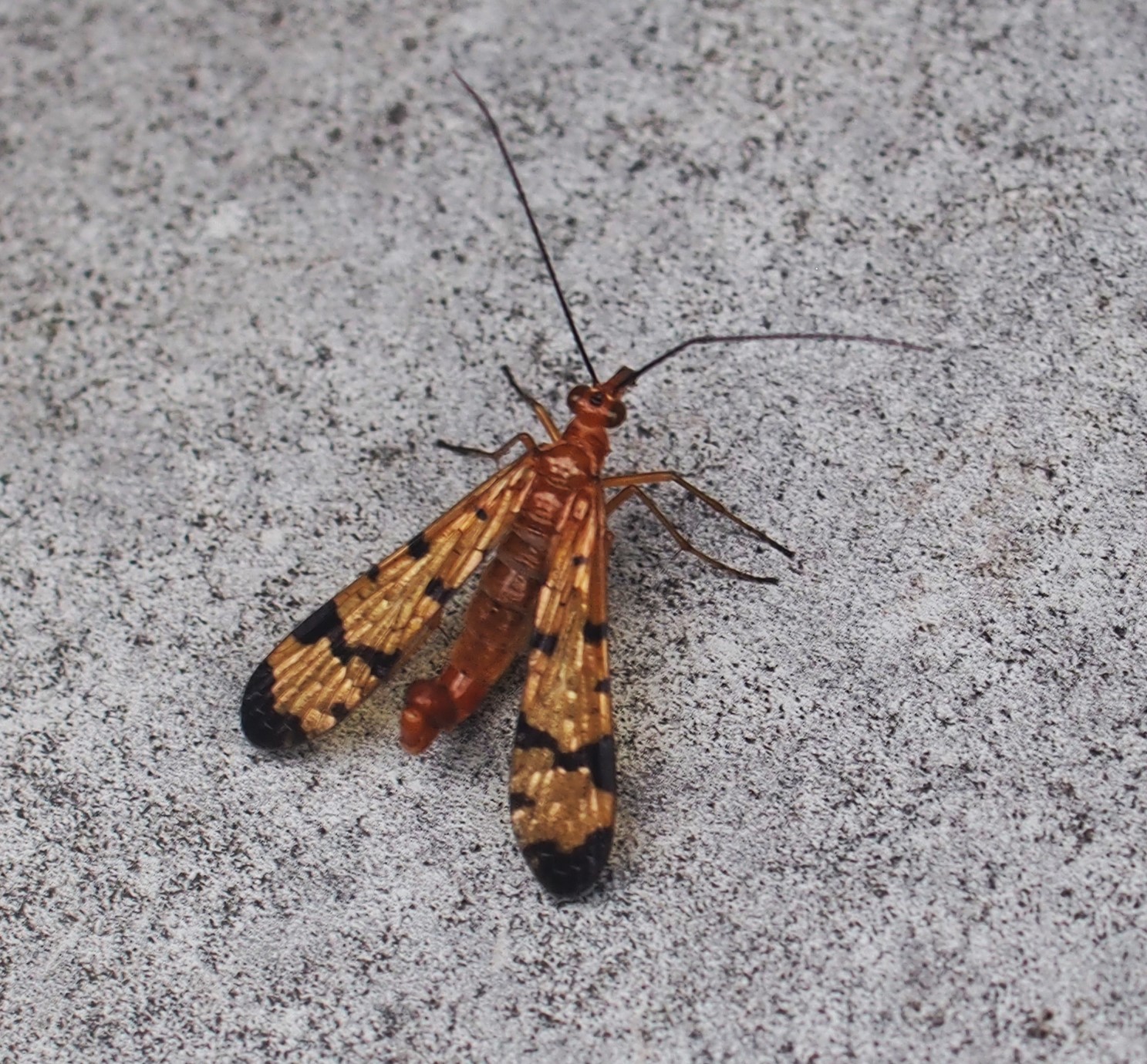
How about some fish pictures? In picture 1, can you see Hedda? (Ms. Gobbler, that is?) Look how she has grown.
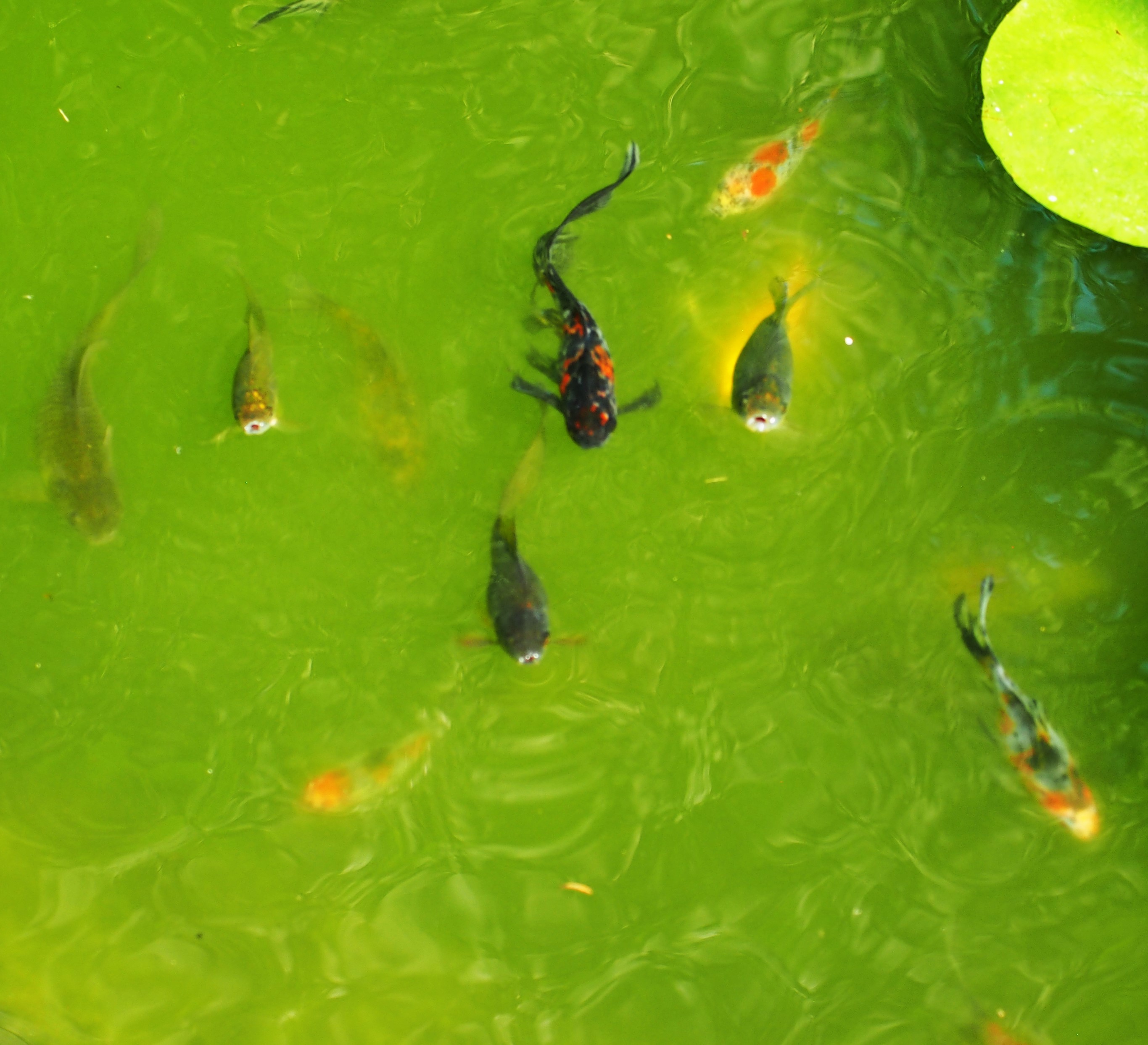
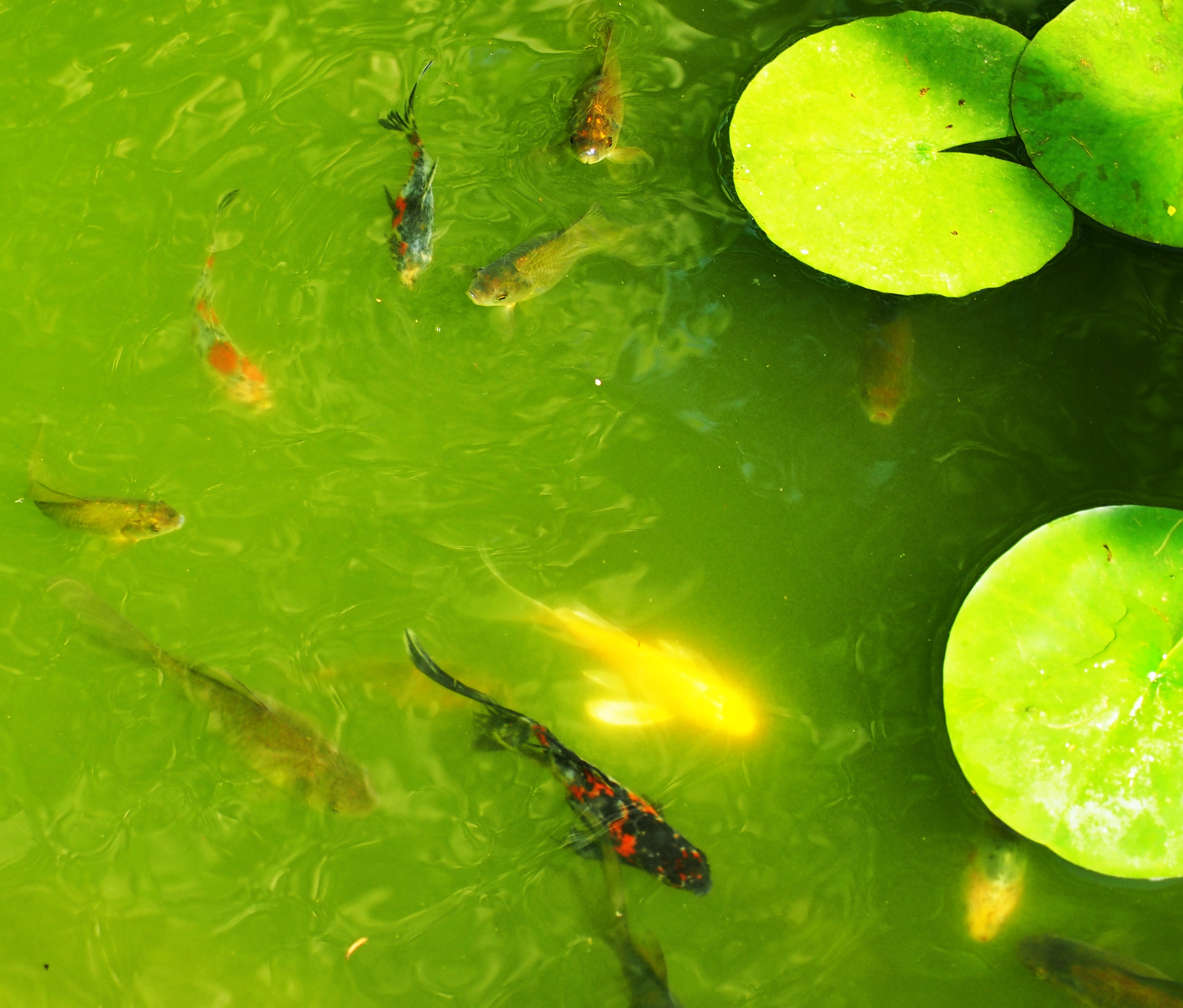
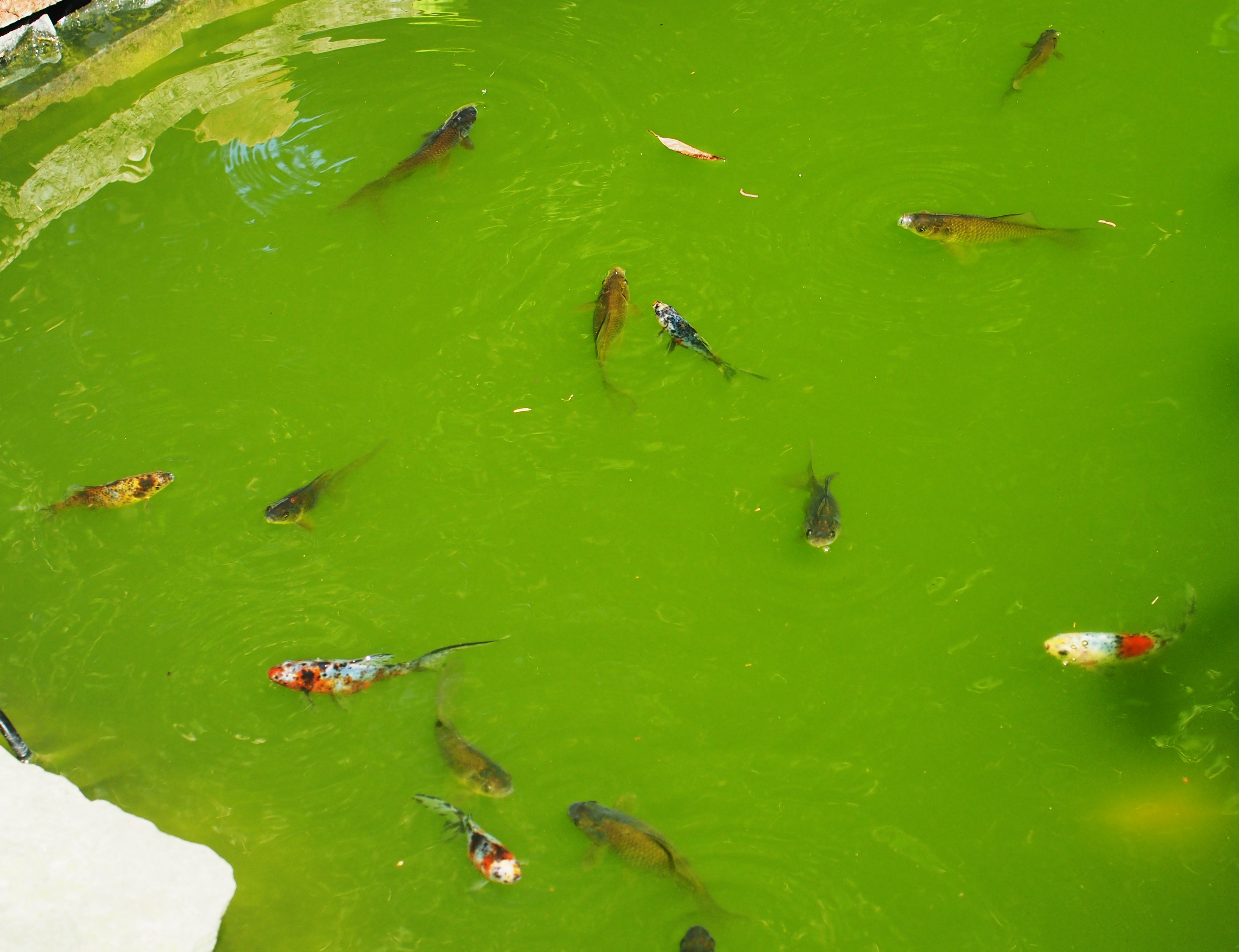
Back to our cry, Please do all you can to save our beautiful planet! Love the earth as one of your best friends. Together we can do it!
Love, Martha
Back to July 30, 2023
Forward to August 20, 2023
Back to main menu
copyright Martha O'Kennon 2023






































































